Vol. 72, No. 19 (2023)
2023-10-05
SPECIAL TOPIC—Attosecond physics
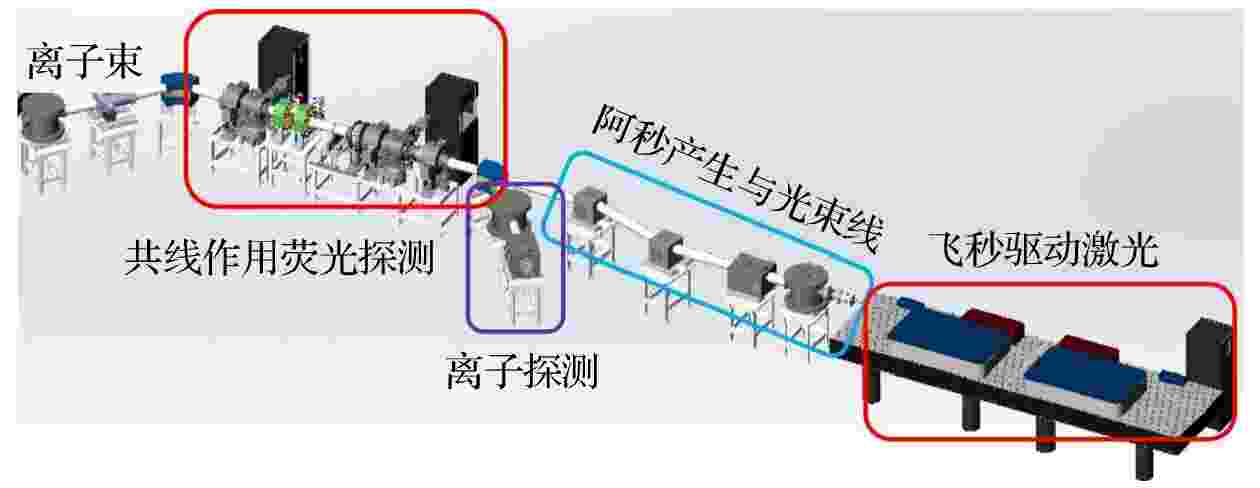
EDITOR'S SUGGESTION
2023, 72 (19): 193201.
doi: 10.7498/aps.72.20230986
Abstract +
The spectra of highly charged ions (HCIs) are of great significance for astronomical observation, astrophysical model establishment, and test of quantum electrodynamics (QED) theory. However, the transitions of HCI are mostly in the extreme ultraviolet or even X-ray range, the excitation spectra of HCI measured by laser spectroscopy in laboratory are very limited due to lack of the suitable light source. Up to now, only few experiments on the spectra of HCIs performed on synchrotron radiation, free electron laser or heavy-ions storage ring have been reported, which are summarized in this work. With the development of attosecond technology, several attosecond light source facilities have been built, such as extreme light infrastructure attosecond light pulse source (ELI-ALPS) and synergetic extreme condition user facility (SECUF), which have high photon energy and ultra-short pulse duration in the extreme ultraviolet and even soft X-ray range, providing new opportunities for laboratory research on HCI spectra and ultra short energy level lifetimes. Electron beam ion trap (EBIT), electron cyclotron resonance (ECR), and heavy-ion storage ring are usually used to generate ion target. But it is difficult to combine the attosecond laser source with large scale facility of HCI, for none of laboratories has both these two facilities now. Thus, two possible experimental schemes for attosecond spectrum of HCIs are proposed in this work. One scheme is that an EBIT can be designed as a terminal of attosecond laser facility, such as ELI-ALPS and SECUF, which can output different laser beams with high photon energy, ultra-short pulse duration or high flux. Another scheme is that a table-top HHG system pumped by an all-solid-state femtosecond laser or fiber femtosecond laser with high power can be combined with heavy-ion storage ring, such as ESR, CSRe, HIAF, and FAIR. Owing to high energy of ions in storage ring, the measurable energy levels of HCIs can even be extended to keV by the Doppler shift. Three different measurement methods: fluorescence detection, ion detection and attosecond absorption spectroscopy, can be used to obtain the HCI spectrum. Finally, a preliminary experimental setup for attosecond laser spectrum of HCI is proposed. The proposal on combining extreme ultraviolet attosecond light source with HCI target is discussed, and the feasibility of attosecond time-resolved precision spectrum for HCI is analyzed according to the typical parameters of attosecond light source and the known excitation cross-section and detection efficiency, which can provide a new platform for implementing ion level structure calculation, QED theory high-precision test and astronomical spectroscopic observation. It can be used to measure the ultra-short lifetime, low excitation cross-section ionic energy level, and even some transitions with large energy interval. We hope that this work can provide a reference for the experimental measuring of HCI spectrum and ion energy level lifetime in future.
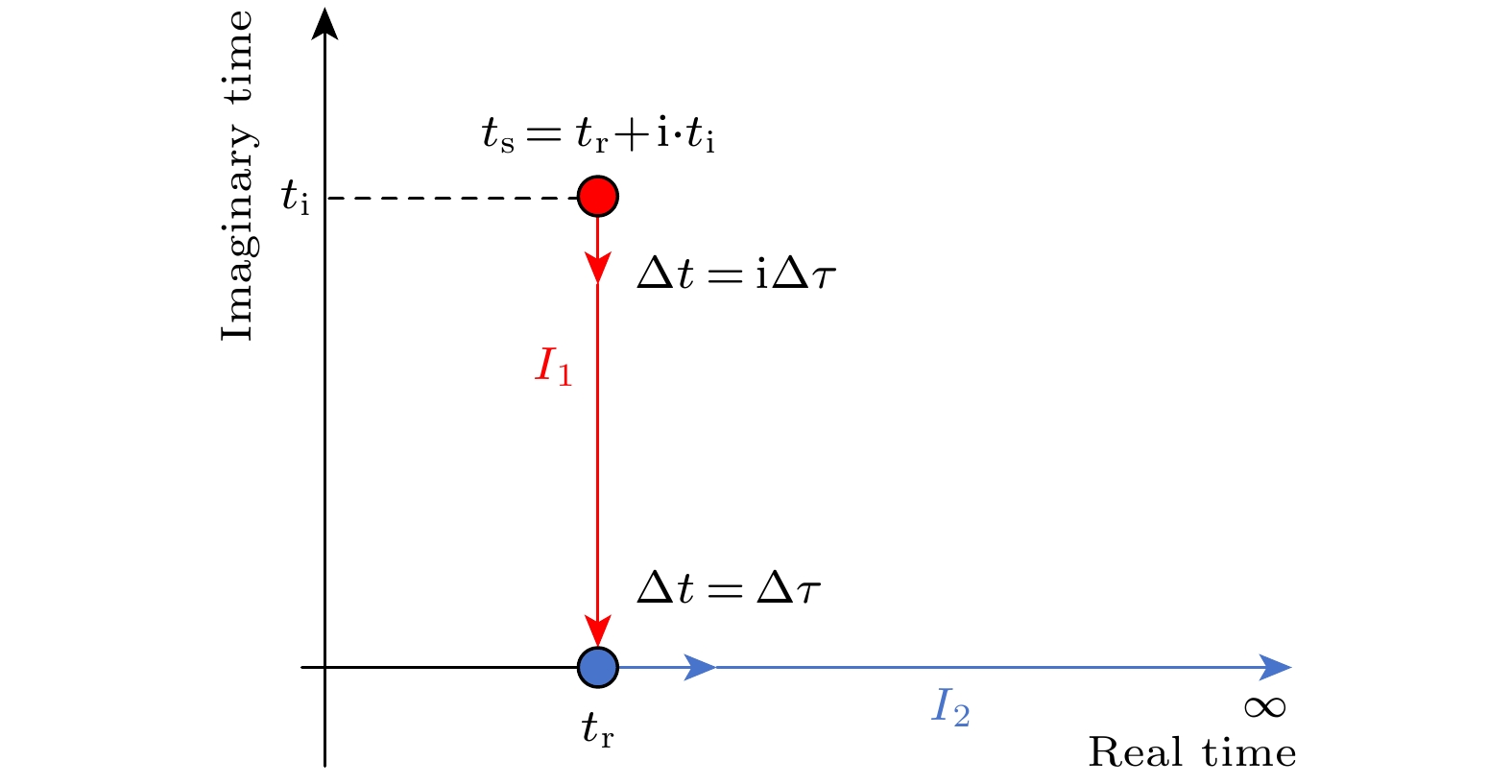
EDITOR'S SUGGESTION
2023, 72 (19): 198701.
doi: 10.7498/aps.72.20230451
Abstract +
The emergence and development of ultrafast intense lasers and attosecond measurement techniques have made it possible to observe and control the motions of electrons on a timescale of attoseconds and a spatial scale of atoms. With the improvement of experimental measurement accuracy, higher requirements are put forward for the accuracy of theoretical calculation methods. Extracting temporal and spatial information about ultrafast dynamics from experimental results through using theoretical models presents a significant challenge. Compared with the exact solutions of the time-dependent Schrödinger equation, the Feynman path-integral method for strong-field dynamics calculations offers a simpler model and higher computational efficiency. The electronic wave packet is regarded as a particle with different initial states, and by analyzing the motion of the particle, the causes of various nonlinear physical phenomena in strong fields can be clarified. This work introduces the saddle point approximation into strong field dynamics calculations based on the strong field approximation theory. Furthermore, the Coulomb-corrected strong field approximation method, trajectory-based Coulomb-corrected strong field approximation method, and Coulomb quantum trajectory strong field approximation method are presented in detail. This review aims to provide relevant methods and literature references for studying strong field dynamics theoretical calculations and also to present some ideas for developing new algorithms.
REVIEW
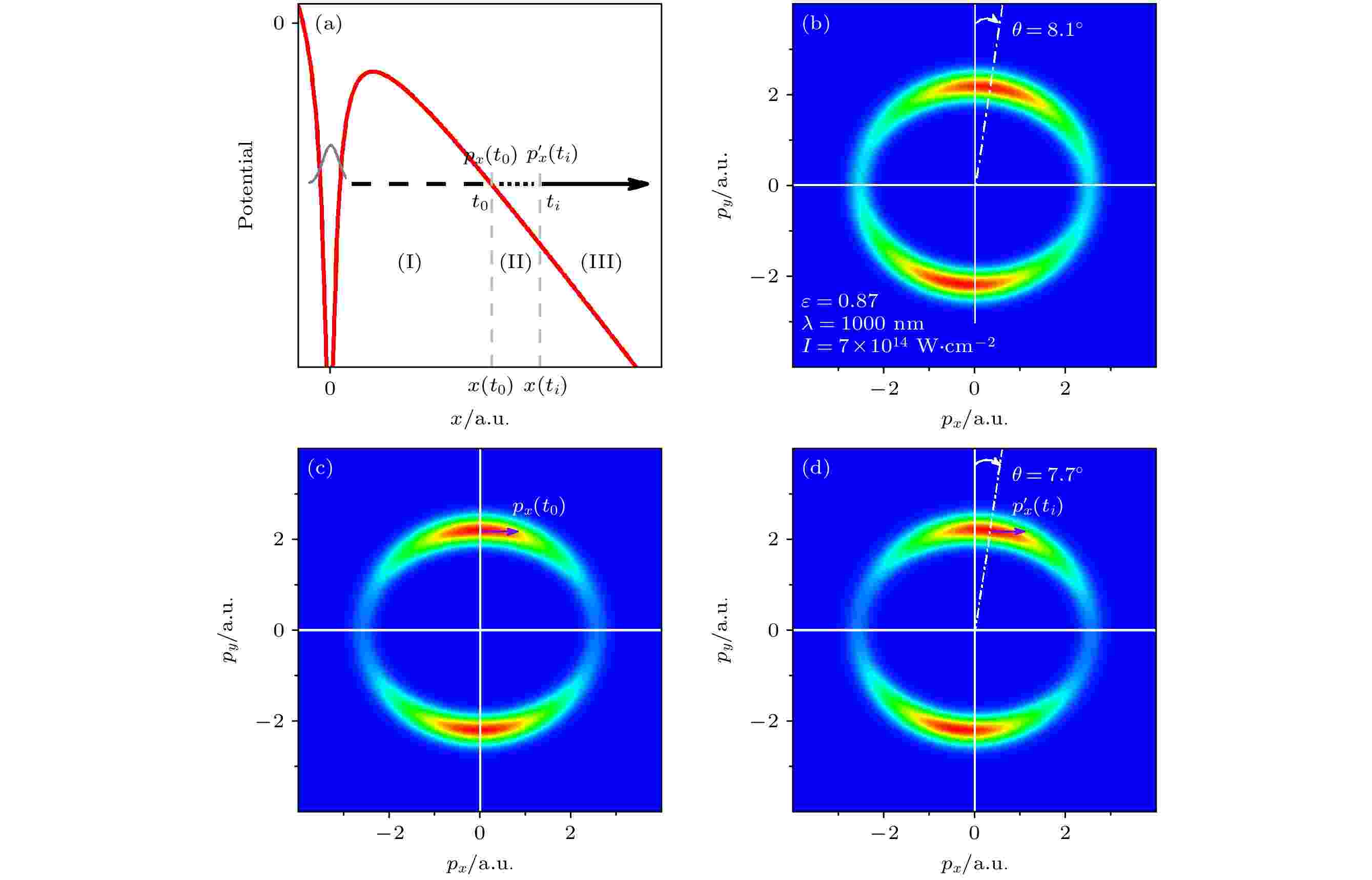
2023, 72 (19): 193301.
doi: 10.7498/aps.72.20230983
Abstract +
The response time of the electron to light in photoemission is difficult to define and measure. The tunneling ionization of atoms and molecules in a strong laser field is a type of strong field-induced photoelectric effect. In this process, the electron response time will change the time of high-order harmonic generation (HHG), which will have a fundamental influence on the reconstruction of electron attosecond dynamics through HHG. We propose a simple theory to resolve the response time problem in strong field atomic tunneling ionization. The response time corresponds to the strong interaction time of three bodies i.e. Coulomb, electron and laser field, which can be determined at the quantum-classical boundary. The observable directly obtained through response time can quantitatively reproduce a series of attoclock experimental curves and provide consistent explanations for these experimental phenomena. This work introduces the main conclusions of response time theory and summarizes in detail the research progress of this theory. Firstly, this theory can be applied to the orthogonal two-color laser field to quantitatively explain the main characteristic structures of photoelectron momentum distribution (PMD). Besides, with this response time theory, the scaling law of the observable in attoclock experiment can be obtained. The proposal of scaling law is expected to provide a systematical theoretical guide for better understanding the applicability or feasibility of the attoclock under different conditions. In addition, based on the atomic response time theory, we further consider the property of multi-center Coulomb potential of molecular and develop a response time theory suitable for molecular system. Subsequently, we further apply the response time theory to polar molecules, by utilizing the asymmetry of PMD closely related to response time to recognize the permanent dipole (PD) effect within the laser sub-cycle. In the end, we discuss the prospects for research on response time. Firstly, it is envisioned to further apply response time theory to weak light and single photon transition to detect the response time of related processes. Besides, considering the significant influence of response time on the property of time-domain of HHG electron trajectories, the recombination (re-scattering) effect based on the current strong field tunneling ionization response time theory can be further investigated, thus extending this theory to describing HHG and above threshold ionization (ATI) processes. Furthermore, designing the “re-scattering electron trajectories” reconstruction scheme based on the electron trajectories with response time correction will provide important suggestions for HHG spectroscopic experiments. Finally, considering the asymmetric ionization caused by the PD effect of polar molecules, if the net ionization yield of adjacent sub-cycles is used as the current indicator, polar molecules can be used as a “micro diode” to study a type of attosecond response switching device. Polar molecular diodes emit electrons through tunneling ionization in laser field. According to the response time theory, tunneling occurs almost instantaneously, and response time needs considering only at the tunneling exit. Based on this, by searching for suitable materials (such as two-dimensional materials), it is possible to design a type of semi-classical diode (which can utilize tunneling) with femtosecond or even sub-femtosecond response time. The response time theory can provide a convenient theoretical tool for designing of such tunneling diodes.
COVER ARTICLE
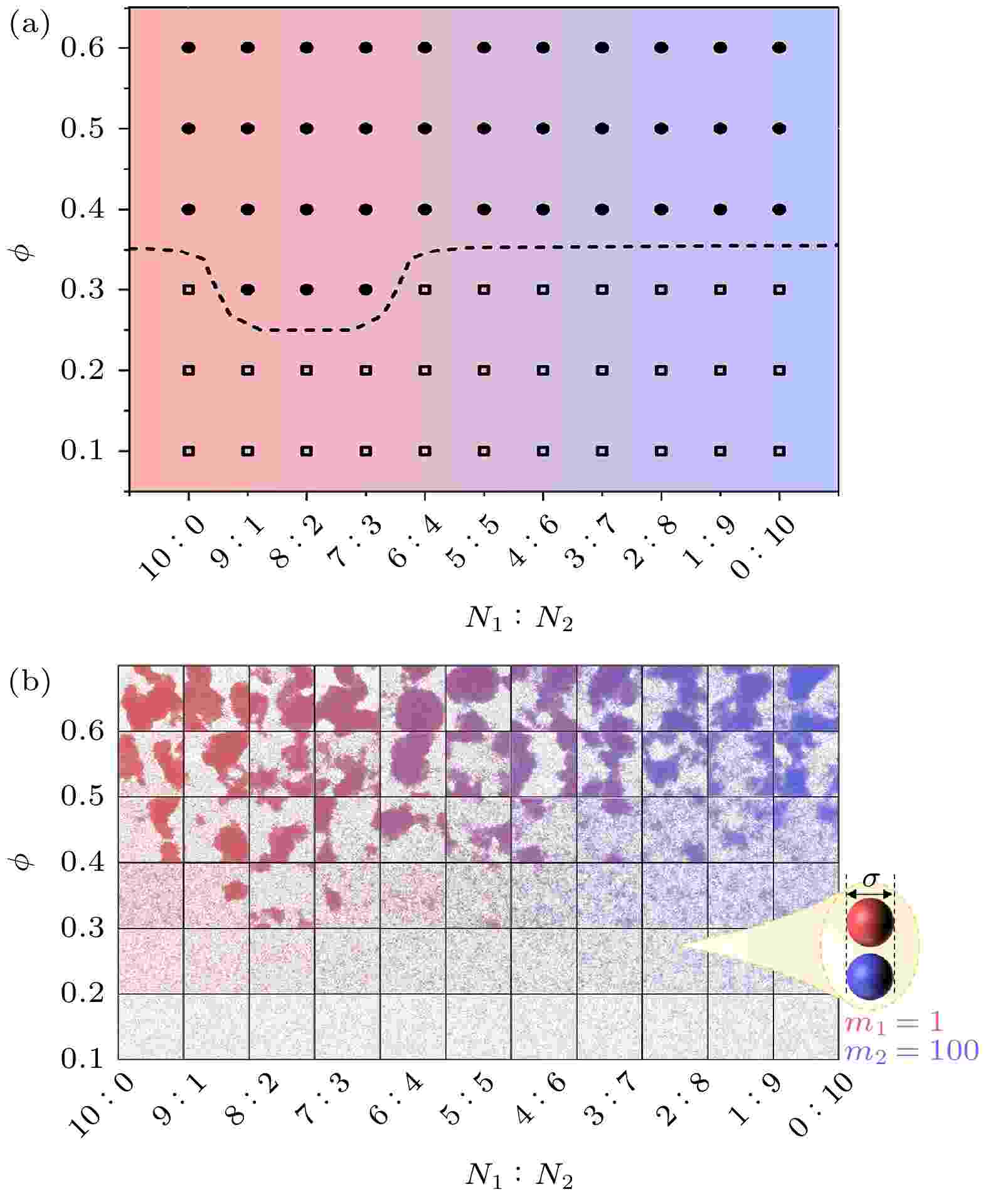
COVER ARTICLE
2023, 72 (19): 190501.
doi: 10.7498/aps.72.20230792
Abstract +
Active matter refers to a class of substance capable of autonomously moving by harnessing energy from its surrounding environment. The substance exhibits unique non-equilibrium phenomenon, and hence has attracted great attention in the scientific community. Many active matters, such as bacteria, cells, micro-swimmers, and self-propelled colloidal particles, operate in viscous environments and their motions are described usually by using overdamped models. Examples include overdamped active Brownian particle (ABP) model for self-propelled colloidal particles in solution and run-and-tumble (RTP) model for swimming bacteria. In recent years, increasing studies focus on the influence of inertia on the behavior of active matter. Vibrating robots, runners, flying insects, and micro-fliers are typical of active systems under the underdamped condition. The motions of these active matters can be modelled by underdamped Langevin equation, known as the active inertial particle (AIP) model. Previous studies have demonstrated that like the scenarios in ABP systems, motility-induced phase separation (MIPS) phenomena also happen in AIP systems under certain density conditions. However, due to the strong collision-and-rebound effect, aggregation of AIP particles and hence the MIPS are impeded. In complex living/application environments, mixture of different active agents is often seen. Some studies on mixed systems of active matter show that the composition is an important quantity, which influences the phase separation phenomena. In this paper, we study the phase separation phenomena in a mixed system composed of low- and high-inertia active particles by underdamped Langevin dynamics simulations. We find that compared with single-component system, the mixed system is unexpectedly favorable for the occurrence of phase separation at a moderate overall concentration and a certain range of component fraction, while unfavorable for phase separation at a high overall concentration. The underlying mechanism is that the presence of a small number of the high-inertia particles could accelerate the motion of the low-inertia particles, thus facilitating their aggregation and promoting the phase separation. However, when the fraction of the high-inertia particles is large, frequent elastic collisions would disturb the aggregation of the low-inertia particles and suppress the occurrence of phase separation. Our results provide a new insight into the collective behavior of active materials and also a reference for their design and applications.
GENERAL
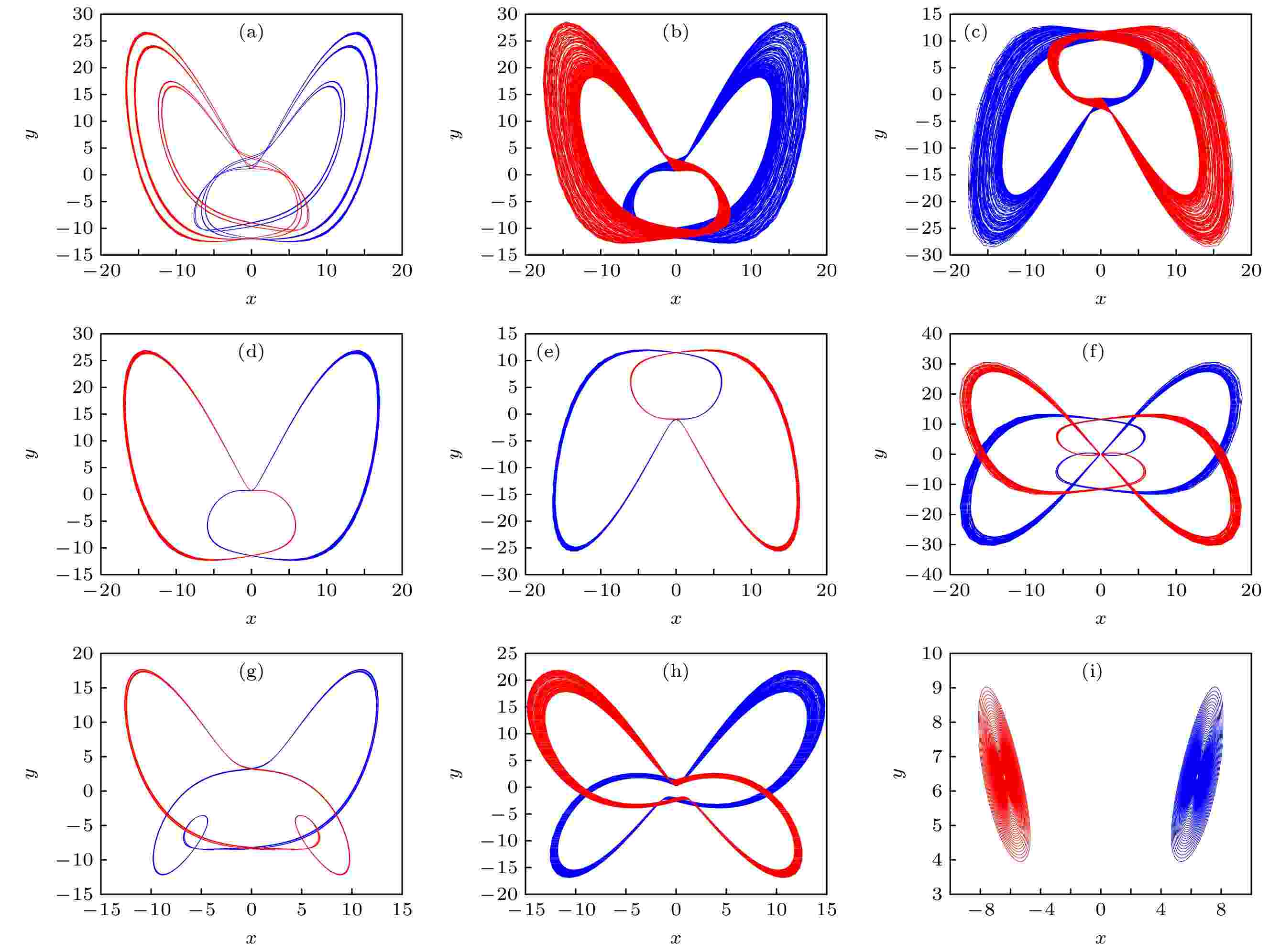
2023, 72 (19): 190502.
doi: 10.7498/aps.72.20230795
Abstract +
To further explore the complex dynamical behaviors in coexisting attractors, a fourth-order chaotic system with four types of coexisting attractors and four unstable equilibrium points is constructed in this paper. The dynamic behavior of the new system is analyzed by means of phase trajectory diagram, time domain waveform diagram, Poincaré map, Lyapunov exponent spectrum and bifurcation diagram. The experimental results show that as the parameters change, the system exhibits rich dynamic behaviors such as stable points, period-doubling bifurcations, coexisting bifurcation modes, and chaotic crises. When the system parameters and memristive parameters change, it is found that the system has different types of coexisting attractors, such as the coexistence of two periodic attractors, the coexistence of two single-scroll chaotic attractors, the coexistence of two double-scroll chaotic attractors, the coexistence of two point attractors. In particular, the system also has the rotation phenomenon of coexisting attractors. Finally, a nonlinear feedback controller is designed, which can make the new system achieve chaos synchronization in a short time. The phase diagram captured by the field-programmable gate array (FPGA) hardware platform is consistent with the numerical simulation results, which proves the feasibility of the system.
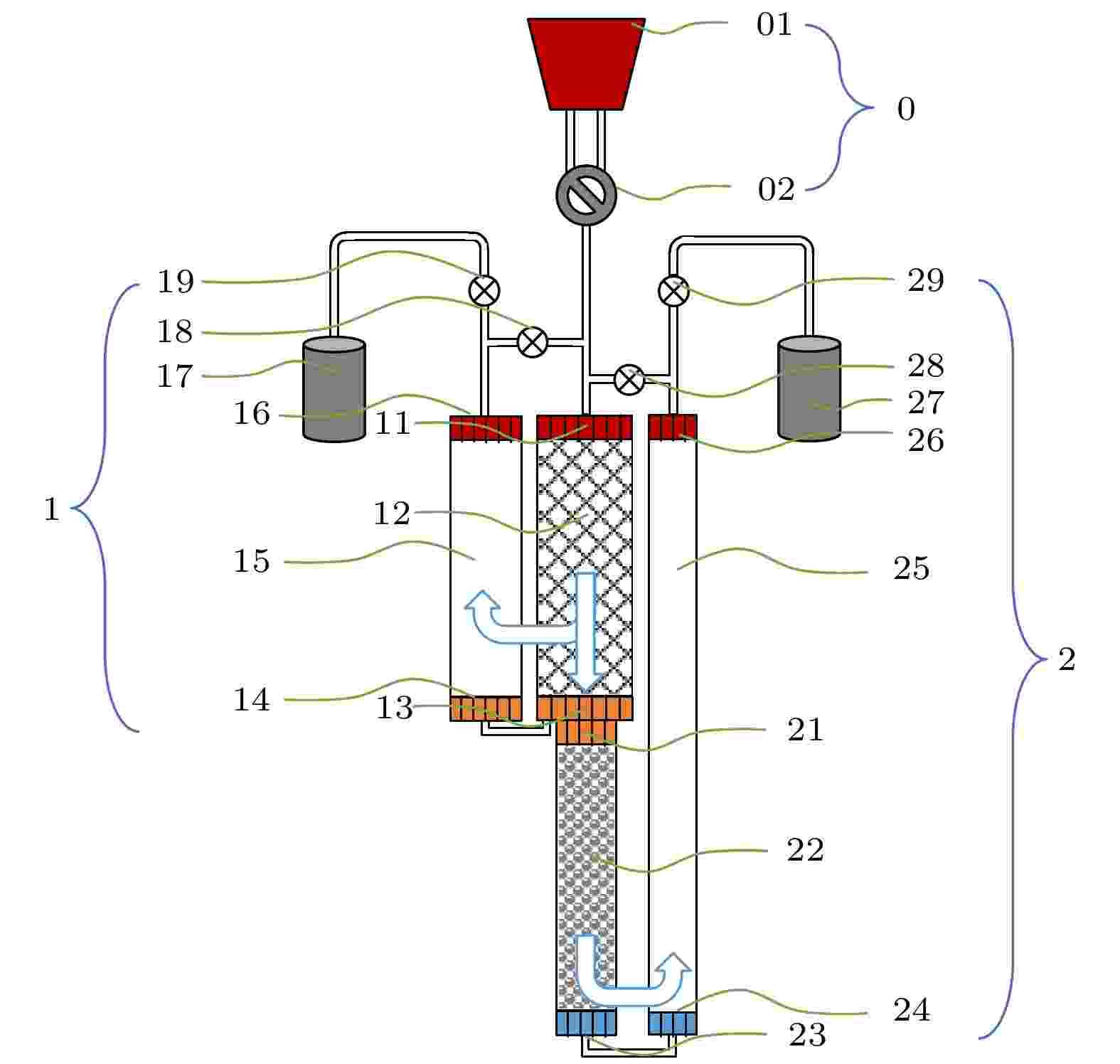
EDITOR'S SUGGESTION
2023, 72 (19): 190701.
doi: 10.7498/aps.72.20230910
Abstract +
Owing to the advantages of large cooling capacity, low vibration and high reliability, GM-type pulse tube cryocoolers at liquid helium temperature have important applications in frontier fields of condensed matter physics research, quantum computing, etc. The phase shifter has an important influence on the cooling performance of pulse tube cryocooler. Previous researches on the phase shifter of GM-type pulse tube cryocooler mainly focused on the effect of a single phase shifter on the performance of the cryocooler at liquid helium temperature. In this paper, based on Sage software, a simulation model of a 4 K two-stage gas-coupled GM-type pulse tube cryocooler is first designed and constructed. The influence of the phase shifters of the two stages on the first-stage and the second-stage temperatures are calculated. The adjustment and optimization process of the cryocooler to obtain the liquid helium temperature is studied. Numerical simulations are given below. 1) The lowest temperature of the model is only about 100 K when the phase shifters of the two stages are closed. The lowest temperature of the model can be reduced to 2.7 K by optimizing the first-stage orifice valve, the second-stage orifice valve, the first-stage double-inlet valve and the second-stage double-inlet valve in sequence. 2) The first-stage orifice valve, the second-stage orifice valve, and the second-stage double-inlet valve have a significant effect on reducing the cooling temperature of the second stage, while the first-stage double-inlet valve has little effect on reducing the temperature of the second stage. 3) The first-stage orifice valve and the second-stage double-inlet valve have a significant effect on reducing the cooling temperature of the first stage, and the first-stage double-inlet valve has little effect on reducing the temperature of the first stage. The second-stage orifice valve will worsen the first stage performance. Finally, an experimental system is constructed. The lowest temperature of the experimental prototype can reach 3.1 K, and the cooling capacity of 0.8 W can be produced at 4.2 K, which is presently the best result obtained by the domestic two-stage gas-coupled valve-separated GM type pulse tube cryocooler. This research can not only promote the independent construction of domestic 4 K refrigeration platform, but also support the relevant frontier basic scientific research and the development of important scientific instruments and equipment. In the future, the structure of the first-stage cold-end heat exchanger and the impedance matching between the compressor and the cryocooler will be improved, and the gas coupling characteristics inside the cryocooler will be studied theoretically and experimentally in depth.
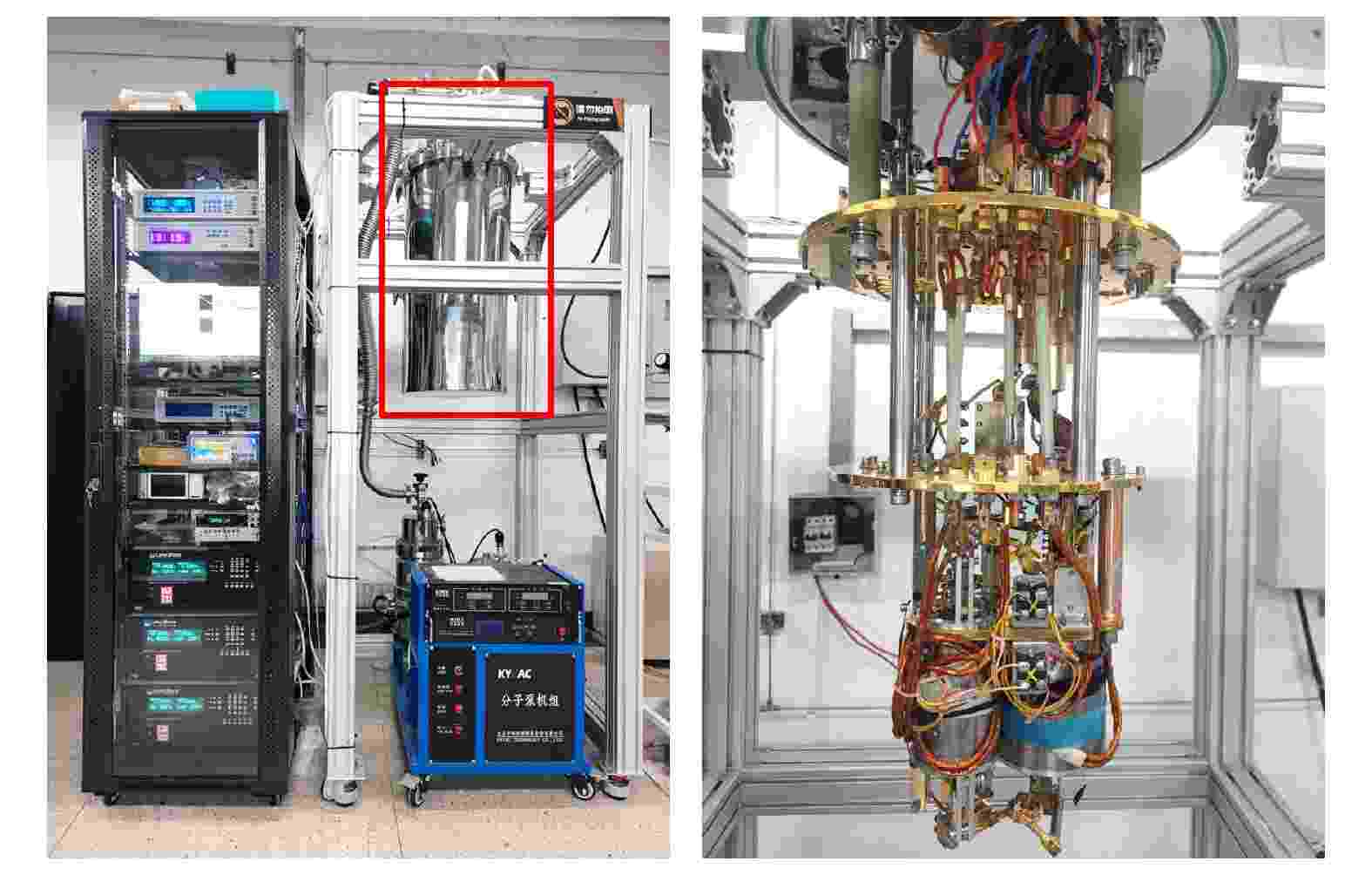
EDITOR'S SUGGESTION
2023, 72 (19): 190702.
doi: 10.7498/aps.72.20231102
Abstract +
NUCLEAR PHYSICS
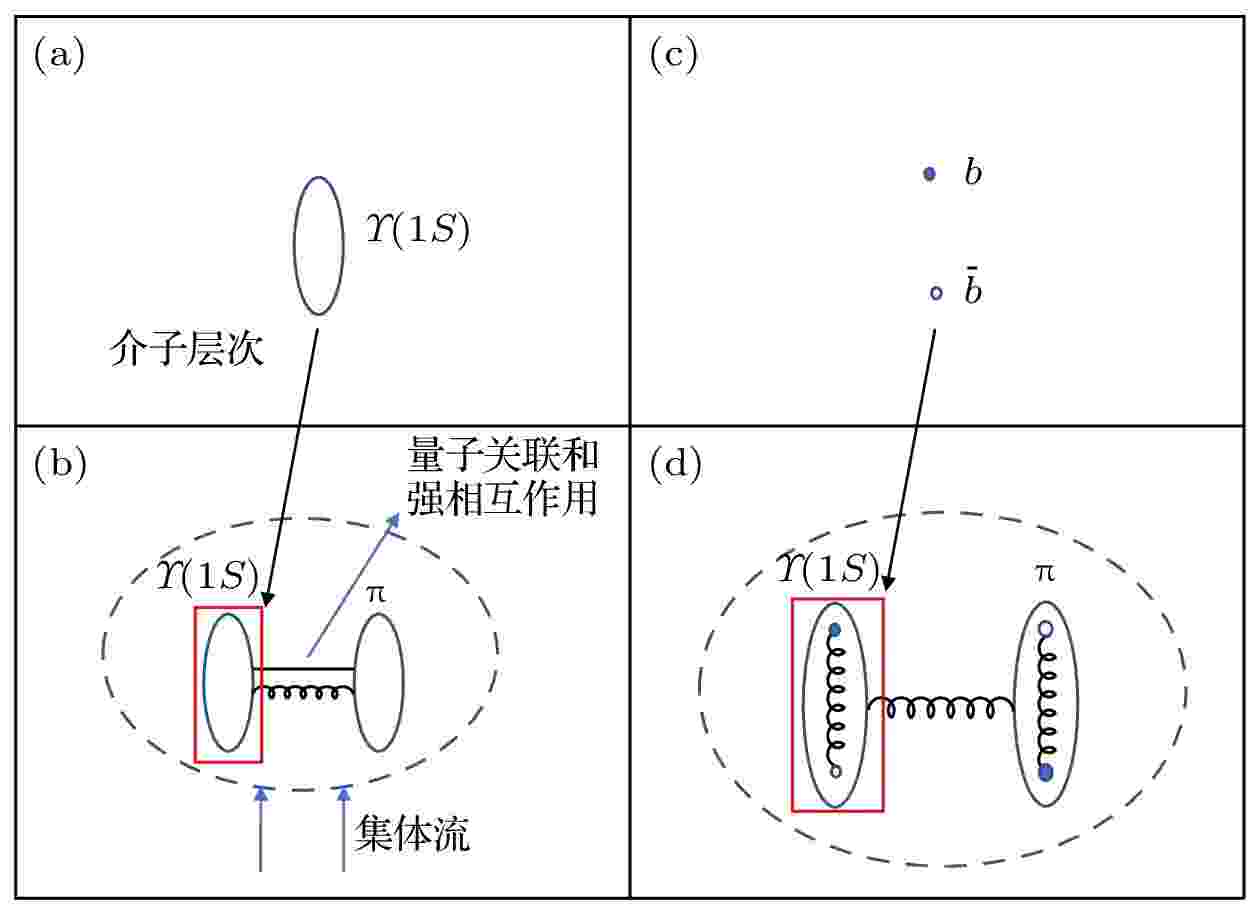
EDITOR'S SUGGESTION
2023, 72 (19): 192501.
doi: 10.7498/aps.72.20230990
Abstract +
The $ \varUpsilon(1S) $ meson serves as a reliable probe in heavy-ion collisions, as the regeneration process in the quark-gluon plasma (QGP) is negligible compared to $ J/\psi $ . Therefore, the distribution of $ \varUpsilon(1S) $ in the hadron gas provides valuable information about the QGP. Consequently, its study holds great significance. The distribution in the hadron gas is influenced by flow, quantum, and strong interaction effects. Previous models have predominantly focused on one or two of these effects while neglecting the others, resulting in the inclusion of unconsidered effects in the fitted parameters. In this paper, we aim to comprehensively examine all three effects simultaneously from a novel fractal perspective through physical calculations, rather than relying solely on data fitting. Close to the critical temperature, the combined action of the three effects leads to the formation of a two-meson structure comprising $ \varUpsilon(1S) $ and its nearest neighboring meson. However, with the evolution of the system, most of these states undergo disintegration. To describe this physical process, we establish a two-particle fractal (TPF) model. Our model proposes that, under the influence of the three effects near the critical temperature, a self-similarity structure emerges, involving a $ \varUpsilon(1S) $ -π two-meson state and a $ \varUpsilon(1S) $ -π two-quark state. As the system evolves, the two-meson structure gradually disintegrates. We introduce an influencing factor, $ q_{{\rm{fqs}}} $ , to account for the flow, quantum, and strong interaction effects, as well as an escort factor, $ q_2 $ , to represent the binding force between b and $ \bar{b} $ and the combined impact of the three effects. By solving the probability and entropy equations, we derive the values of $ q_{{\rm{fqs}}} $ and $ q_2 $ at various collision energies. Substituting the value of $ q_{{\rm{fqs}}} $ into the distribution function, we successfully obtain the transverse momentum spectrum of low-$ p_{\rm{T}} $ $ \varUpsilon(1S) $ , which demonstrates good agreement with experimental data. Additionally, we analyze the evolution of $ q_{{\rm{fqs}}} $ with temperature. Interestingly, we observe that $ q_{{\rm{fqs}}} $ is greater than 1 and decreases as the temperature decreases. This behavior arises from the fact that the three effects reduce the number of microstates, leading to $ q_{{\rm{fqs}}}>1 $ . The decrease in $ q_{{\rm{fqs}}} $ with system evolution aligns with the understanding that the influence of the three effects diminishes as the system expands. In the future, the TPF model can be employed to investigate other mesons and resonance states.
ATOMIC AND MOLECULAR PHYSICS

2023, 72 (19): 193202.
doi: 10.7498/aps.72.20230683
Abstract +
In this paper, we utilize a classical ensemble model with Heisenberg-core potential to study sequential double ionization (SDI) of Ar atom by an elliptically polarized laser field. The results show that for random laser phases, as the laser wavelength increases, the ion momentum distribution gradually evolves from a six-band structure at 800 nm to an eight-band structure at 1600 nm. When the laser phase is stable, the ion momentum distribution from 1600 nm laser field exhibits a ten-band structure. These multi-band structures directly reflect the subcycle ionization dynamics of electrons in an elliptically polarized laser field. There is a significant shift among the outer three bands of ion momentum distrbutions from different laser phases, which leads to the fact that only one band is observed in the outer region of the ion momentum distribution for the case of random laser phases. By analyzing the ionization times of the two electrons, it is found that for the case of random phases, the inner bands of the ion momentum distributions originate from those combinations of electron ionization bursts with the ionization time difference of 0.5 cycle, and the outer bands arise from those combinations of ionization bursts with the ionization time difference of 1, 2 and 3 cycles. For 800 nm, the middle band corresponds to those combinations of ionization bursts with the ionization time differences of 1.5 and 2.5 cycles. For 1600 nm, there are two bands in middle regime. One is from the combination with the ionization time difference of 1.5 cycles, and the other is from those combinations with the ionization time difference of 2.5 and 3.5 cycles. These results indicate that in the case of long wavelength and phase-stable laser, the subcycle dynamics in sequential double ionization of atoms is more likely to be observed.
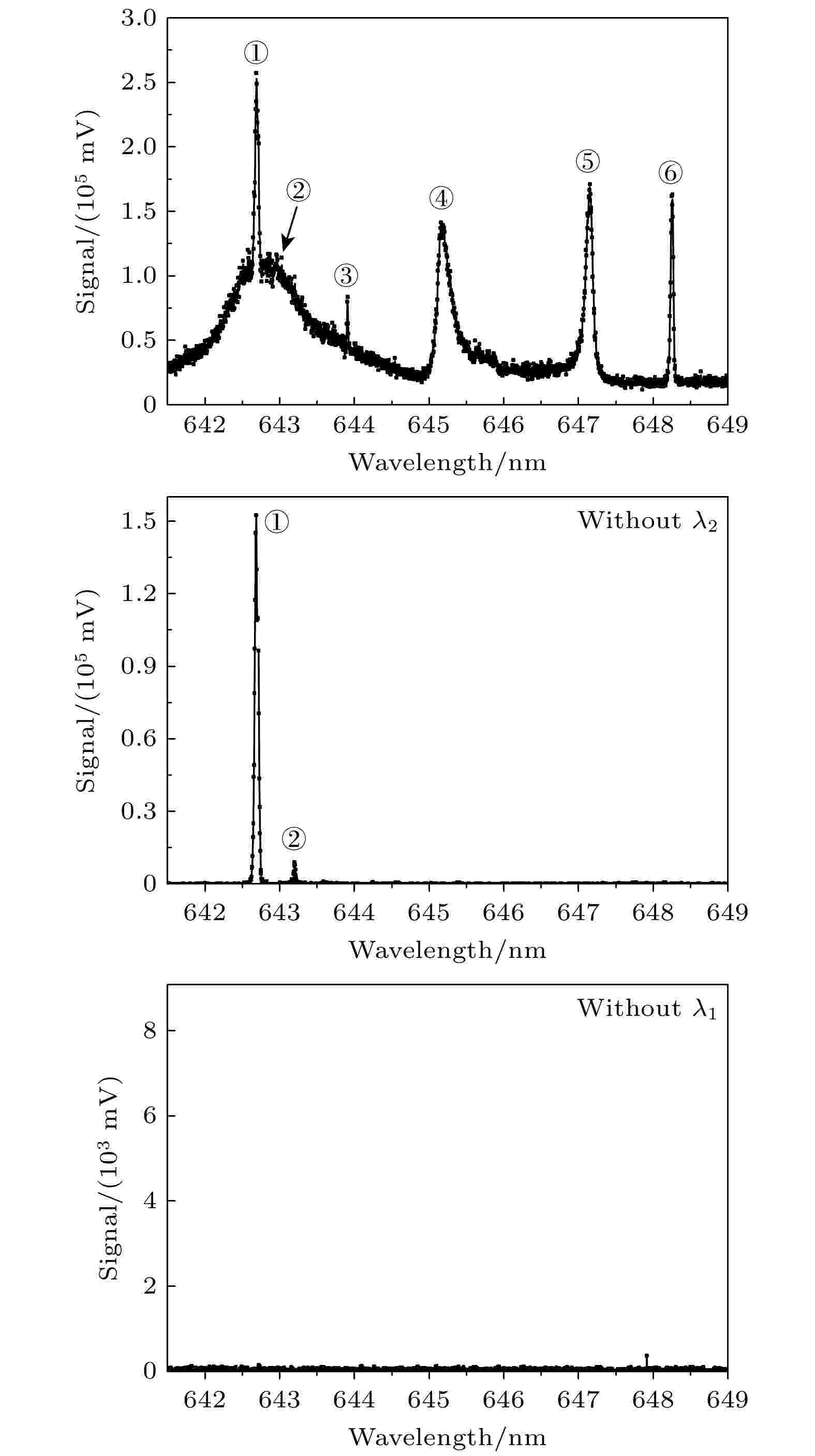
EDITOR'S SUGGESTION
2023, 72 (19): 193203.
doi: 10.7498/aps.72.20230978
Abstract +
177Lu is an important medical isotope used in imaging-guided radiotherapy, and it can be produced by irradiating 176Lu or 176Yb with high abundance. With an increasing demand for medical isotopes, it is very essential to improve the supply capacity for 177Lu. The multi-step multi-color photoionization method is an effective method to obtain isotopes, and the information of odd-parity autoionization levels is essential. Laser resonance ionization spectroscopy is one of a few spectroscopic experimental methods that can study autoionization levels. An experimental system is developed for the frontier spectroscopic research, and it consists of custom-made tunable lasers and a high-resolution time of flight mass spectrometer. The lifetime of the excited state 35274.5 cm–1 is measured to be (31.6 ± 1.7) ns by the delayed photoionization method for the first time. A three-step three-color photoionization process is used to detect the autoionization levels, with a delay of 30 ns between λ2 – λ1 and λ3 – λ2 respectively, in order to avoid any unexpected transitions. Forty-seven odd-parity autoionization levels are obtained, of which 33 levels are discovered for the first time, and the λ2 and λ1 are blocked to exclude possible interference peaks, such as the λ1+λ3+λ3 transition. Several autoionization levels show asymmetrical peak shapes, and the Fano fitting is carried out for all the levels to determine the widths and relative transition strengths of the autoionizing transitions. This study provides critical data for the high-efficient photoionization of lutetium atoms in the visible range. The angular momenta of 21 odd-parity autoionization levels in an energy range of 50650–51650 cm–1 are identified for the first time, which provides a reference for determining the forbidden state of electric dipole transitions from other excited states and ascertaining the electronic configuration.
ELECTROMAGNETISM, OPTICS, ACOUSTICS, HEAT TRANSFER, CLASSICAL MECHANICS, AND FLUID DYNAMICS
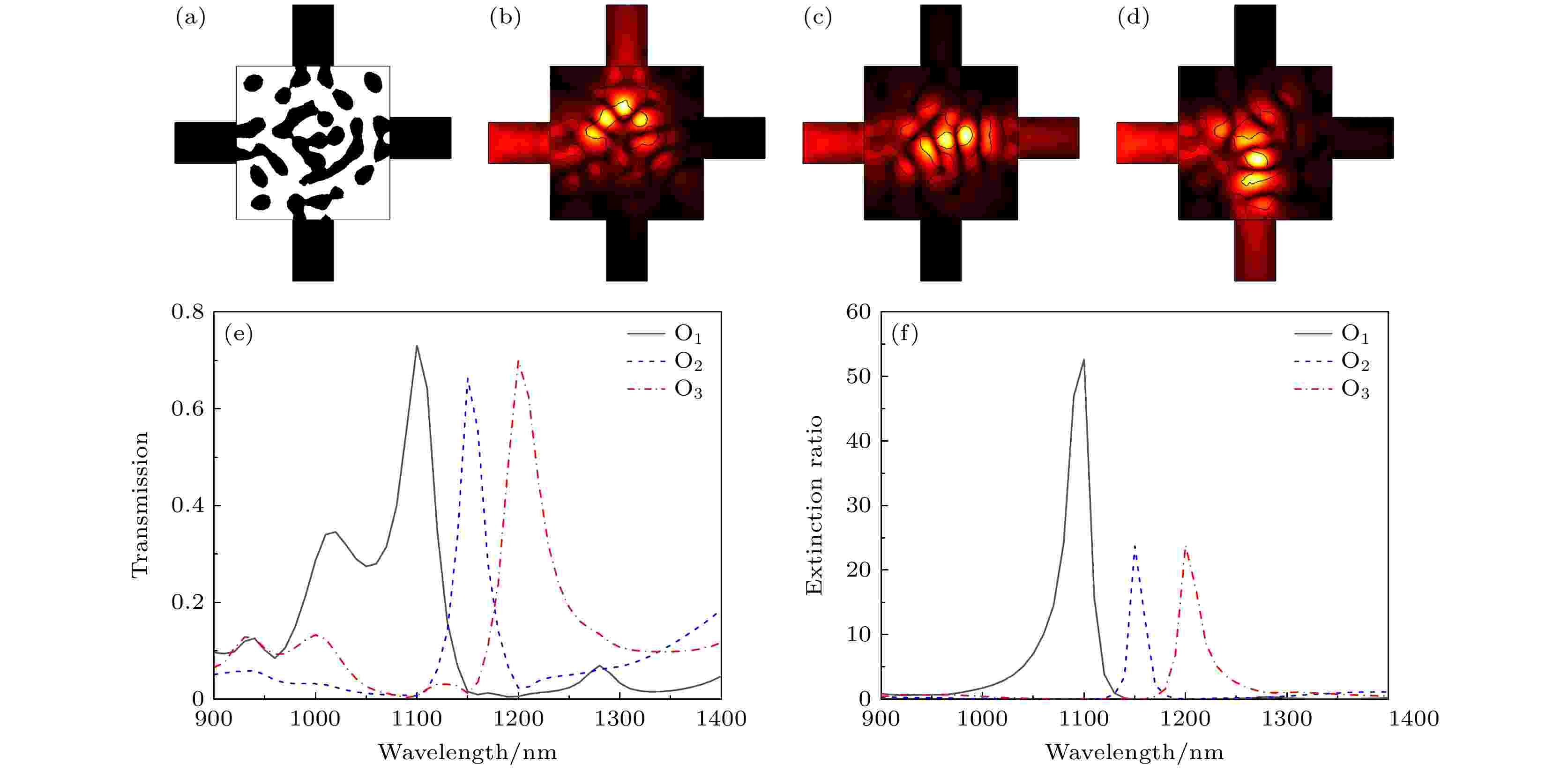
2023, 72 (19): 194101.
doi: 10.7498/aps.72.20230892
Abstract +
Micro-nano wavelength beam splitter is an important beam-splitting device in photonic chips. In this study, the sequence quadratic program is used to design ultra-compact wavelength beam splitters with footprints of 1.5 μm × 1.5 μm. The Y-type dual channel beam splitter can realize TE/TM mode splitting at the same time, the transmissions of TE mode light at 1140 nm and 1200 nm are 80% and 81%, and the extinction ratios are 18.1 dB and 16.3 dB, respectively. The transmissions of TM mode light are 70% and 67%, and the extinction ratios are 18.3 dB and 15.9 dB, respectively. The T-type beam splitter realizes 180° separation angle splitting, and the transmissions of optical power at the wavelengths of 1100 nm and 1170 nm both reach 88%, and the extinction ratios are 16.6 dB and 15.0 dB, respectively. It is the smallest size chip-integrated wavelength beam splitter. The cross-type three-channel beam splitter realizes splitting with a wavelength interval of 50 nm. The transmissions at the wavelengths of 1100, 1150 and 1200 nm are 73%, 66% and 70%, and the extinction ratios are 17.2, 13.8 and 13.8 dB, respectively. The asymmetric three-channel beam splitter realizes splitting with the wavelength interval of 20 nm. The transmissions at the wavelengths of 1200, 1220 and 1240 nm are 61%, 56% and 57%, and the extinction ratios are 10.8, 7.9 and 8.9 dB, respectively. This method has the advantages of a short design period, high design efficiency, simple structure, easy processing, and suitability for designing chip-integrated photonic components. It is expected that it can provide a new idea for designing chip-integrated photonic devices.
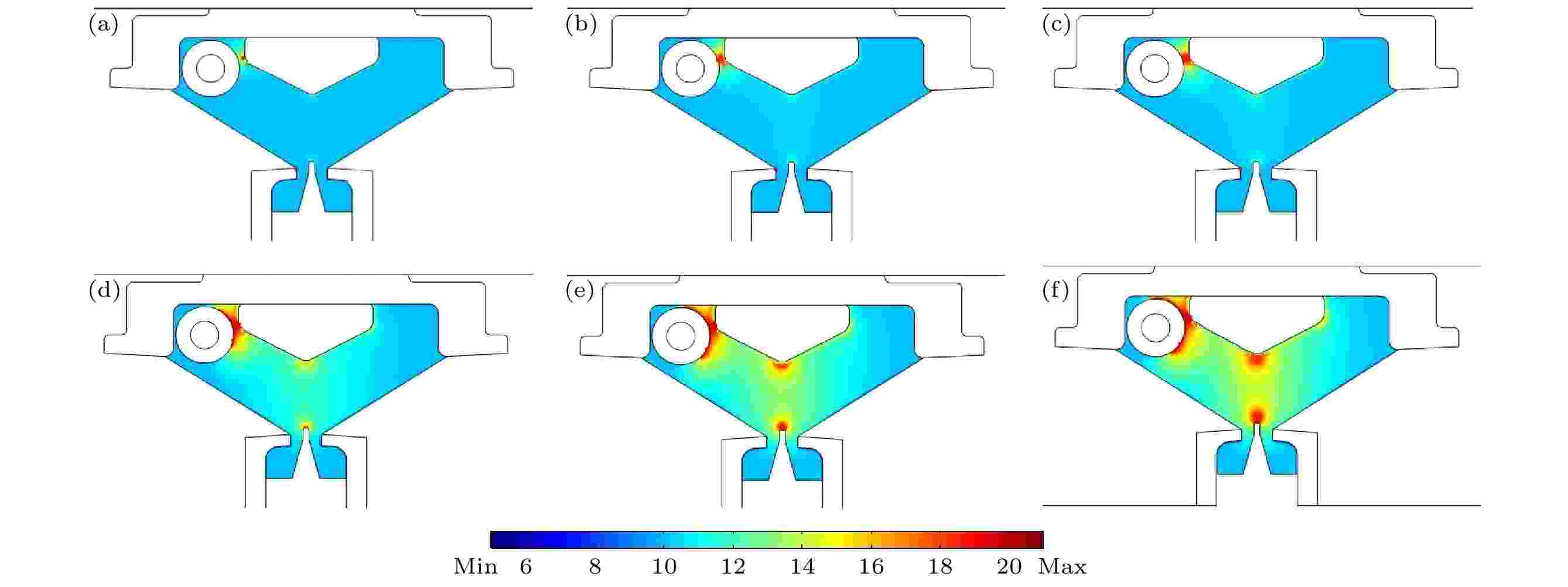
2023, 72 (19): 194201.
doi: 10.7498/aps.72.20230731
Abstract +
Excimer laser plays an important role in the national economic production because of its short wavelength, high repetition frequency and large energy. In the output characteristics of excimer lasers, high beam quality and high energy stability are the characters of high-end excimer light source, and whether the excimer laser system can sufficiently develop the preionization process is the key to output laser pulses with high beam quality and stable energy. This paper is mainly to study the preionization process of ArF excimer laser, and establish one-dimensional simulation calculation model and two-dimensional simulation calculation model. Based on the fluid calculation method of Comsol Multiphysics software, the numerical simulation analysis and calculation are carried out, with the study focusing on the ionization wave propagation process in the preionization process and the relationship between preionization and main discharge. The results show that the spatial structure of corona rod and main electrode should be considered comprehensively when an excimer laser system is designed. Appropriate preionization structure and voltage can make the main discharge triggered during the maintenance of free electrons, which can effectively reduce the discharge voltage, avoid streamer and arc discharge, and improve the output beam quality and system energy stability.

2023, 72 (19): 194202.
doi: 10.7498/aps.72.20230643
Abstract +
The SGII-UP laser facility is one of the most important high power laser systems in China, and it is also one of a few inertial confinement fusion laser devices that operate all year round in the world. In order to further improve its output capacity to meet higher physical requirements, measures such as increasing the number of neodymium glasses, adopting new N41 neodymium glasses, and improving the energy configuration of xenon lamps are taken to improve the gain capacity of the main amplifier. Calculation of the new main amplifier construction model predicts that the small gain coefficient will reach 4.9%. And further modulation of the laser device shows that when the output of 10 kJ fundamental frequency energy is needed, the injection energy decreases from 5 J to 1.26 J, which supports a higher output energy and a stronger basic frequency output capability. Furthermore, it is analyzed that under different laser pulse injection conditions of 1, 5, 10 ns, the B integral is obviously reduced, which means that the near-filed quality of the beams is better. According a small-size modulation suppression is induced by nonlinear phase shift, and high-fluence laser is expected to pass before and after the improvement, which is a key prerequisite for a higher output energy. Based on these analyses, fundamental frequency output energy values with different pulse injections are calculated and an improvement from 8 kJ to 12.5 kJ output is expected under 10 ns square pulse condition. Tests show that the small signal gain coefficient of the device increases from 4.15% cm to 4.94% cm, which is consistent with simulation results, and the average gain multiple of a single beam increases from 9000 to 118000, which is an order of magnitude higher. The output verifies the fundamental frequency output capacity exceeding 12.5 kJ under 10 ns square pulse as well as a small-size modulation suppression around 0.16 mm–1 as a result of joint action of non-linear phase shift and spatial filtering. After the significant improvement, the SGII-UP laser facility will strongly support more ambitious physical experiment targets.
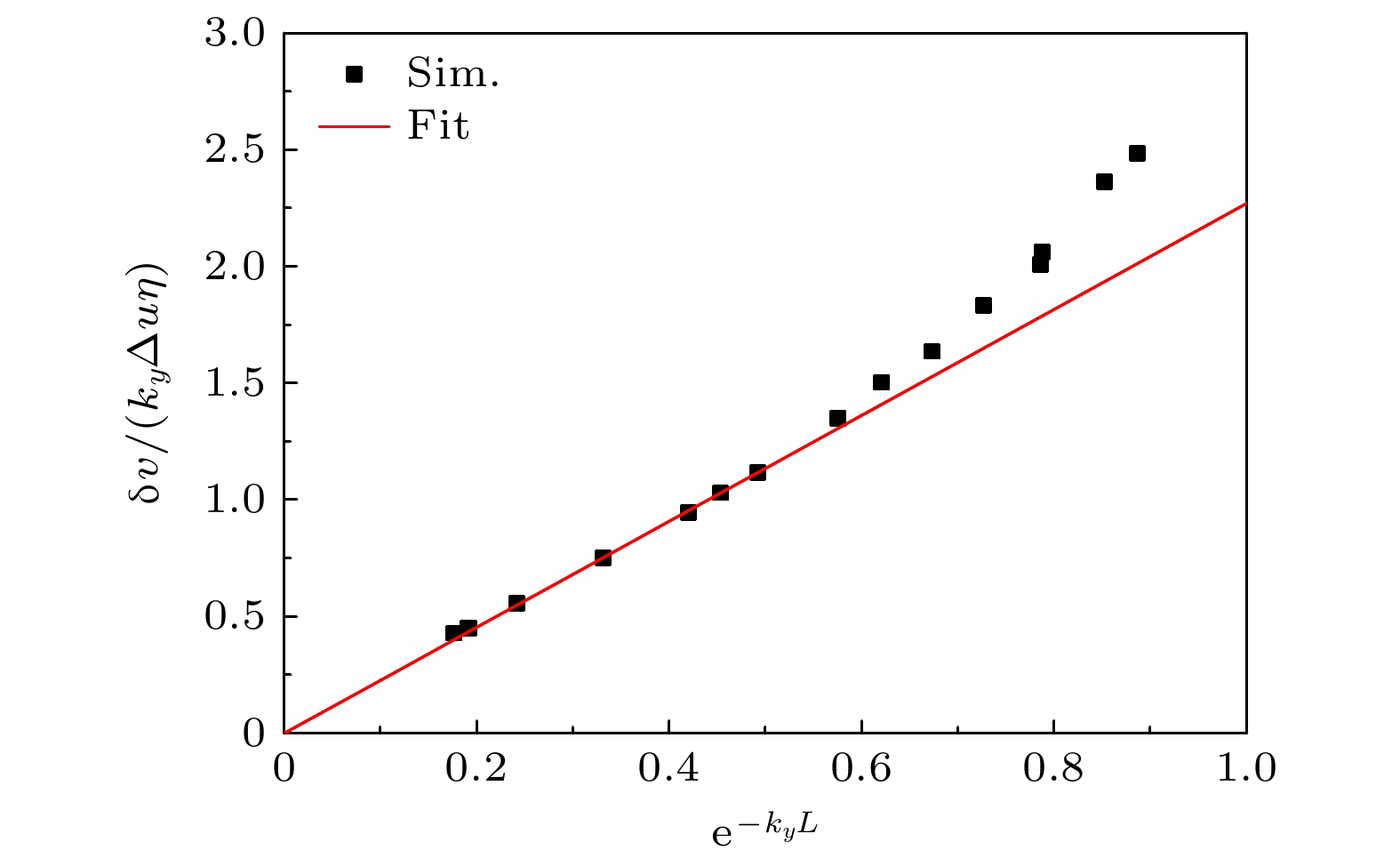
EDITOR'S SUGGESTION
2023, 72 (19): 194701.
doi: 10.7498/aps.72.20230928
Abstract +
The interaction between the shock and the internal density perturbation of the target material produces a Richtmyer-Meshkov-like (RM-like) instability, which couples with the ablation front and generates instability seeds. Recent studies have demonstrated the significance of internal material density perturbations to implosion performance. This paper presents a two-dimensional numerical investigation of the growth of the RM-like instability in linear region and its coupling mechanism with the interface. Euler equations in two dimensions are solved in Cartesian coordinates by using the fifth-order WENO scheme in space and the two-step Runge-Kutta scheme in time. The computational domain has a length of 200 μm in the x-direction and λy in the y-direction. The numerical resolution adopted in this paper is $ {\Delta _x} = {\Delta _y} = {\lambda _y}/128 $ . A periodic boundary condition is used in the y-direction, while an outflow boundary condition is used in the x-direction. The interaction between shock and density perturbation will deposit vorticity in the density perturbation region. The width of the density perturbation region can be represented by the width of the vortex pair. The growth rate of the RM-like instability can be represented by the growth rate of the width of the density-disturbed region or the maximum perturbation velocity in the y-direction. The simulation results show that the growth rate of the vortex pair width is proportional to the perturbation wave number ky, the perturbation amplitude η, and the velocity difference before and after the shock wave Δu, specifically, δv∝kyΔuη. In the problem of coupling the RM-like instability with the interface, we calculate the derivation of the interface perturbation amplitude with respect to time to obtain the growth rate of the interface. It is concluded from the simulations that the coupling of the RM-like instability with the interface has two mechanisms: acoustic coupling and vortex merging. When the density perturbation region is far from the interface, only acoustic wave is coupled with the interface. The dimensionless growth rate of interface perturbation caused by acoustic coupling decays exponentially with kyL, δvi/(kyΔuη)∝$ {{\text{e}}^{ - {k_y}L}} $ . When the density perturbation region is closer to the interface, acoustic coupling and vortex merging work together. The vortex merging leads to an increase in the perturbation velocity when the Atwood number of the interface is positive. When the Atwood number is positive, reducing the Atwood number at the interface and increasing the width of the transition layer at the interface can both reduce the growth of interface perturbation caused by the RM-like instability coupling.
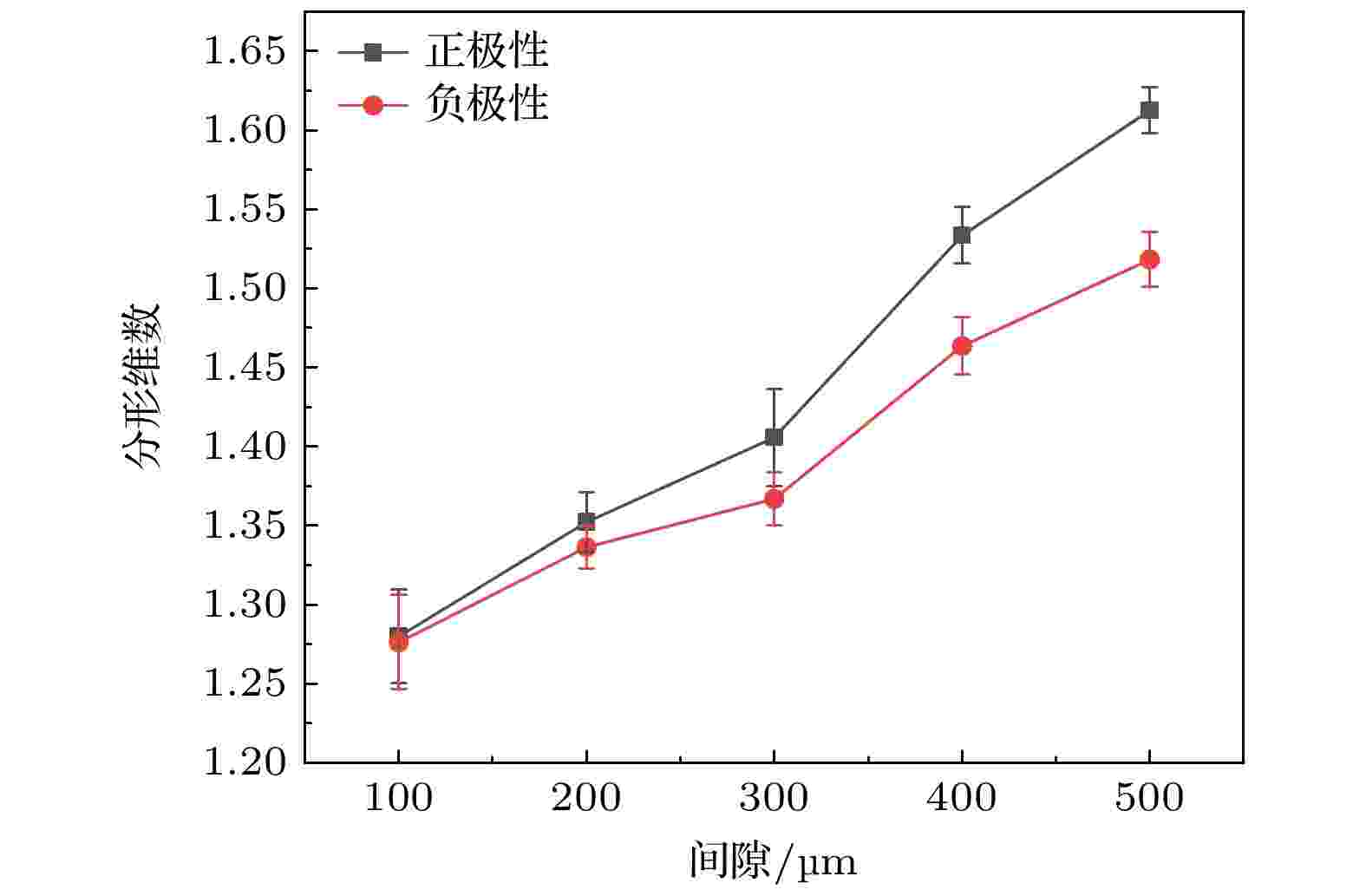
2023, 72 (19): 194702.
doi: 10.7498/aps.72.20230937
Abstract +
In order to study the characteristics of streamer discharge in sub-millimeter gap, an experimental system and an image acquisition system of positive and negative polarity streamer discharge in the gap of 100–500 μm at atmospheric pressure are built, and the initial breakdown voltages and breakdown images of positive and negative polarity streamer discharge in a gap range of 100–500 μm are collected, and the fractal dimension of the experimental discharge images is calculated by Matlab. The experimental analysis shows that the air breakdown discharge in the gap range of 100–500 μm still conforms to the stream theory, and the polarity effect between the breakdown voltage of positive and negative streamers and the fractal dimension of the discharge image is obvious. The influence of space charge and photoionization on the meandering degree and coverage of the discharge channel in stream theory increase with the increase of the gap, and jump at 300 μm. The fractal simulation of positive and negative streamer discharge with a gap of 500 μm is established by using WZ (Wiesmann-Zeller) model based on fractal theory in Matlab. It is found that the development probability index η is inversely proportional to the fractal dimension, and that the η is smaller in positive streamer than in negative streamer under the same discharge condition.

2023, 72 (19): 194703.
doi: 10.7498/aps.72.20230863
Abstract +
In this paper, the interaction between the two bubbles with the effects of mass transfer, heat transfer and diffusion was investigated under ultrasonic action by using the model combining the modified Keller-Miksis equation with Noble-Abel-Stiffend-Gas equation of state. The maximum normalized radius of cavitation the bubbles and the secondary Bjerknes force (coefficient) of the interaction between the bubbles are calculated respectively, and compared with the maximum normalized radius of the bubbles and the secondary Bjerknes force (coefficient) in the two bubbles system without the effects of mass transfer, heat transfer and diffusion given by Mettin et al [Mettin R, Akhatov I, Parlitz U, Ohl C D, Lauterborn W 1997 Phys. Rev. E 56 2924]. The results show that the maximum normalized radius of the bubbles and the secondary Bjerknes forces between the bubbles are larger in the two bubbles system with the effects of mass transfer, heat transfer and diffusion than in the two bubbles system without the effects of mass transfer, heat transfer and diffusion. The main reason for this result is that the effects of mass transfer, heat transfer and diffusion can increase the amount of gas contained in the cavitation bubble. With the increase of the initial radius of a certain the bubble in the two bubbles system, the secondary Bjerknes force will increase and the difference between the secondary Bjerknes forces in the two cases will gradually increase. With the increase of the driving sound pressure amplitude, the secondary Bjerknes force will also increase and the difference between the secondary Bjerknes forces in the two cases will also gradually increase. With the increase of the driving frequency, the secondary Bjerknes force will decrease and the difference between the secondary Bjerknes forces in the two cases will also gradually decrease. Therefore, the effects of mass transfer, heat transfer and diffusion have a significant effect on the secondary Bjerknes force of the interaction between cavitation the bubbles, which is an important factor that cannot be ignored. The research results of this article have positive significance for further understanding of the secondary Bjerknes force of the interaction between the two bubbles under ultrasonic action.
PHYSICS OF GASES, PLASMAS, AND ELECTRIC DISCHARGES
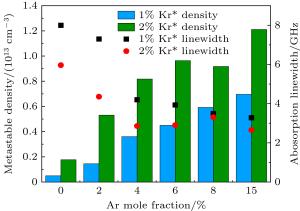
EDITOR'S SUGGESTION
2023, 72 (19): 195201.
doi: 10.7498/aps.72.20230956
Abstract +
High metastable density is one of the research hotspots of optically pumped rare gas laser (OPRGL). Considering that the Ar metastable state energy level is only 20 cm–1 different from the Kr excited state 5p[3/2]2, argon gas is added to the He/Kr discharge system. Owing to the long lifetime of the Ar metastable state atoms, through the collision resonance energy transfer process of Ar(4s[3/2]2)→Kr(5p[3/2]2), the purpose of supplementing and increasing the metastable density of Kr (Kr*) can be realized. In the case of obtaining the same metastable density, the pressure of the discharge power source is reduced, and a new idea is provided for further obtaining a high metastable density in a large discharge volume. In this work, the experimental analysis is carried out from the perspectives of spectral diagnosis and measurement of metastable density by laser absorption spectroscopy. The results show that the peak of radiative transition line of Kr high energy level atoms participating in the collision to the metastable state energy level is significantly enhanced after adding argon, and the tail signal of the transition line is extended within one discharge cycle. Under the gas conditions of 100 mbar, 1% Kr and 12.5% Ar, the peak value of the spectral line can be enhanced by about 10 times, and the tail signal of the transition line can be extended from 0.6 μs to 14.25 μs. At the same time, the density of Kr metastable energy level atoms is measured under different Ar content. Under the gas conditions of 100 mbar, 15% Ar and 1% Kr, the density of Kr* increases from 4.94×1011 cm–3 to 6.96×1012 cm–3. At low pressure, the absorption linewidth of Kr metastable atoms narrows with the increase of Ar content. Under the gas condition of 600 mbar and 1% Kr, when the content of Ar is increased to 5%, the peak density of Kr* increases from 4.69×1013 cm–3 to 5.79×1013 cm–3, i.e. the increment is 20%. Although the enhancement of metastable-atom-generation at high pressure is not so significant as those at low pressure, an increasing trend can still be observed. The results verify that the Kr metastable atoms generated in each discharge period can be supplemented by Ar-Kr resonance energy transfer.
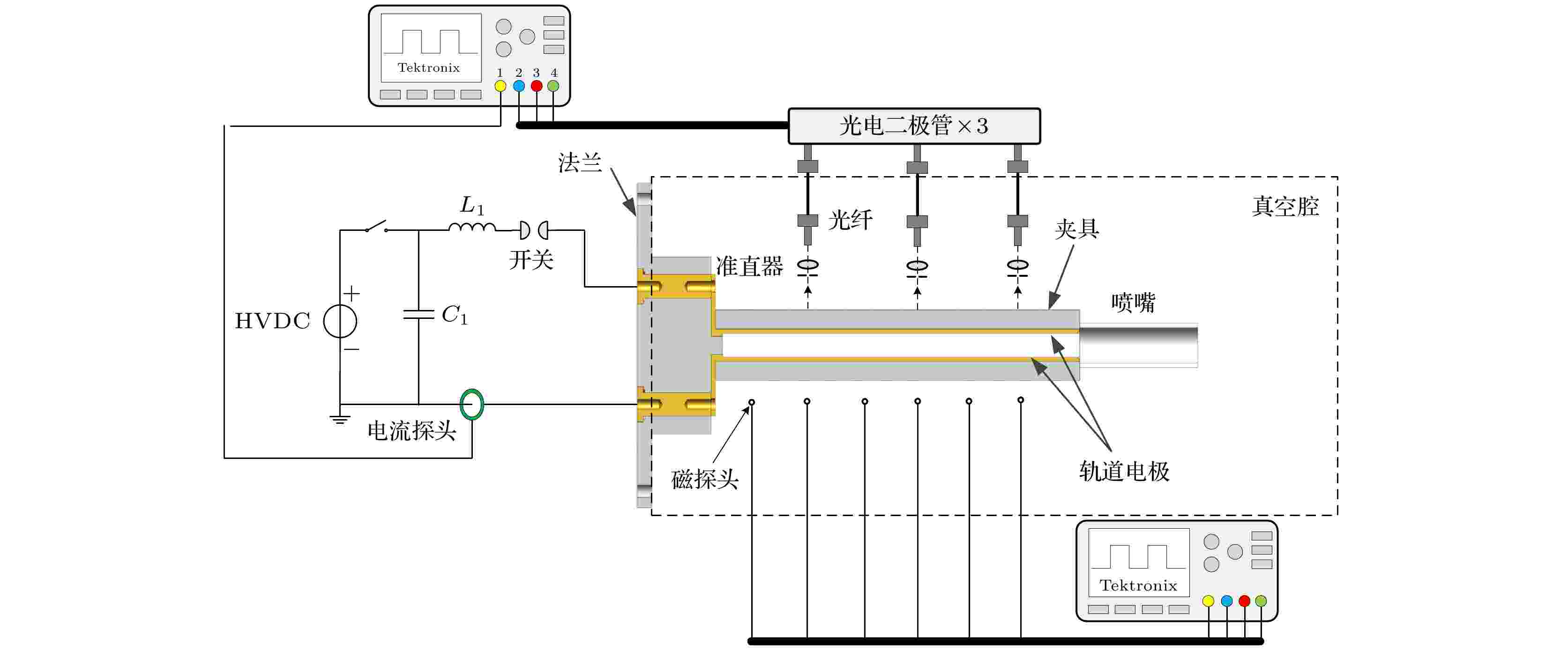
2023, 72 (19): 195202.
doi: 10.7498/aps.72.20231007
Abstract +
Electromagnetic plasma accelerators which can generate high-density and hypervelocity plasma jets have been widely used in plasma physics research and application fields. An experimental platform of parallel-plate accelerator electromagnetically driven plasma is established in this paper, mainly including a parallel-plate accelerator, a power supply, magnetic probes, photodiodes, a current probe, and an oscilloscope. The current distribution and plasma velocity characteristics of a parallel-plate accelerator under static pressure are studied by using magnetic probe array and photodiode array. The working gas is synthetic air. A mechanical pump is used to pump the vacuum chamber to about 1 Pa, and then synthetic air is injected into the vacuum chamber to a target pressure. The power supply of the parallel-plate accelerator has a sinusoidal oscillation attenuation waveform with a total capacitance of 120 μF and a total inductance of about 400 nH. When the charging voltage is 13 kV, the discharge current is 170 kA and the pulse width is 23.5 μs. The discharge currents are 38, 100, 135 kA, and 170 kA when the pressures are 100, 200, 400 and 1000 Pa, respectively. The current distribution of the parallel-plate accelerator is concentrated, and the discharge mode is consistent with the snowplow mode, when the discharge current is small and the working pressure is high. As the discharge current increases or the working pressure decreases, a diffuse current distribution gradually appears in the parallel-plate accelerator. Two regions are formed, i.e. the plasma front region and the plasma tail region. The diffuse current distribution phenomenon is more remarkable when the discharge current is higher or the working pressure is lower. The plasma front current distribution proportion decreases and the plasma front velocity increases with the increase of discharge current and the decrease of working pressure. However, the plasma velocity proportion increased is much lower than the discharge current proportion increased or working pressure proportion decreased. When the discharge current increases from 38–170 kA, the plasma velocity increases from 25.0 km/s to 33.6 km/s, with the velocity increment being only 34.4%. The plasma front region is subjected to both the Lorentz force and the thermal pressure of the plasma tail region.
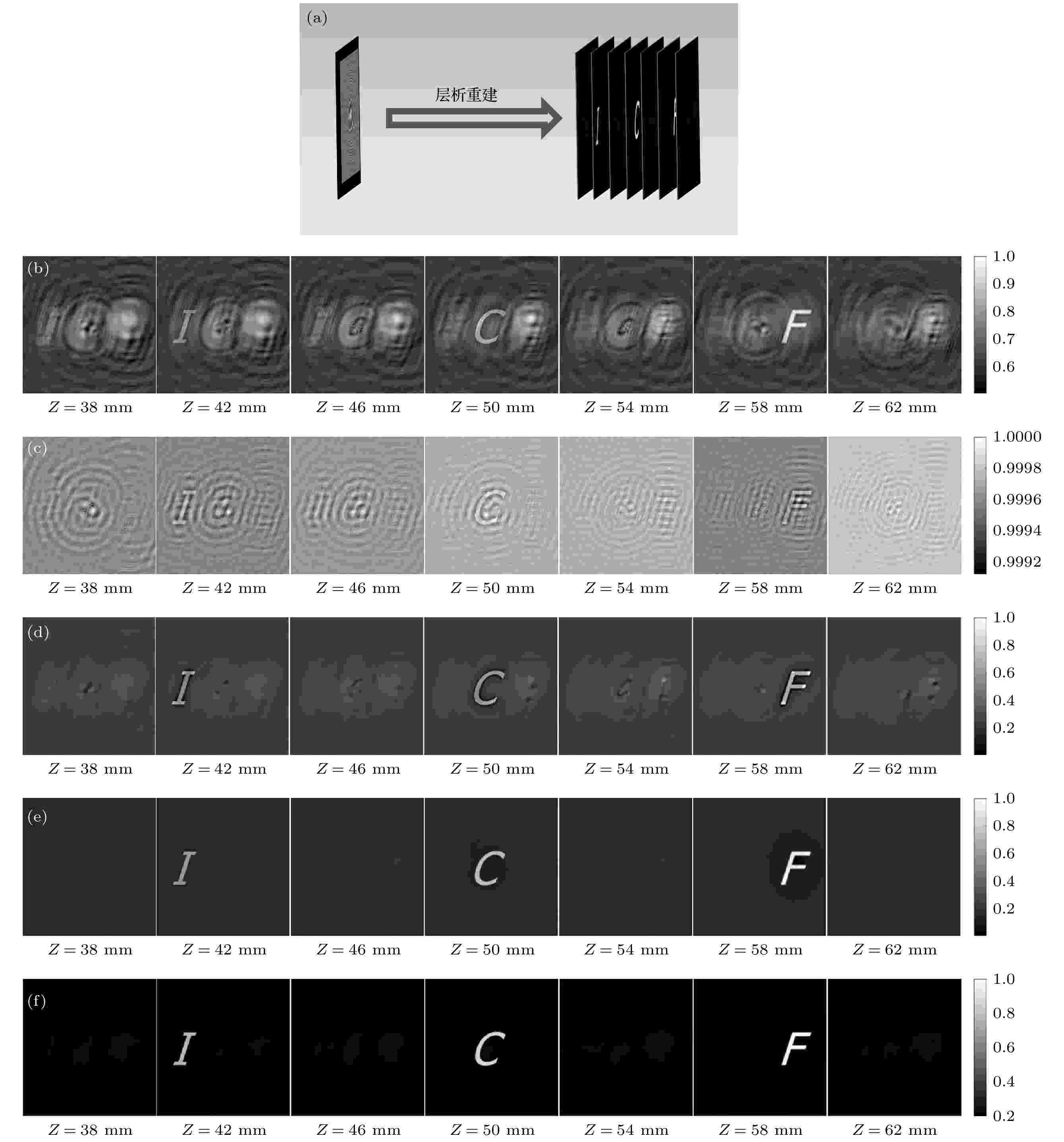
2023, 72 (19): 195203.
doi: 10.7498/aps.72.20230920
Abstract +
At present, in the experiment on inertial confinement fusion (ICF), no single imaging diagnosis of the black cavity plasma or the implosion target region can distinguish the emission intensity information in the depth direction, that is, the images acquired by the detector are intensity integral along the detection direction. In this paper, a tomographic imaging method using incoherent holography for microscale X-ray source is introduced. The incoherent holographic imaging technology has an imaging mechanism that encodes and compresses the three-dimensional space information of the light source into a two-dimensional hologram. In the theoretical part, we examine the imaging mechanism of incoherent holographic tomography. Then the compress sensing model which is appropriate for this incoherent tomography is investigated. Combined with the hologram reconstruction algorithm based on compress sensing, the two-dimensional distributions of light intensity at different object distances along the detection direction can be recovered from the two-dimensional hologram. In order to verify the feasibility of this imaging scheme, we simulate the incoherent holographic imaging process of a light source with an axial length of 16 mm, and obtain the tomography light intensity distribution result with a spacing of 4 mm by reconstructing the corresponding incoherent hologram through using the backpropagation algorithms, Wiener filtering algorithm, and compress sensing algorithm. All reconstruction methods mentioned above can recover the corresponding letter light source at a certain object distance, indicating the potential of incoherent holographic technology for three-dimensional imaging. For the backpropagation reconstruction image, there is a large amount of series noise at the edge of the light source signal, which affects signal recognition in practical applications. Although the Wiener filtering algorithm can recognize the image signal to some extent, the low contrast of the reconstructed image results in the distribution of target source strength mixed with background noise. Compared with the algorithm based on the Wiener filtering and backpropagation, compress sensing theory provides a more professional technique for the ill-condition problem. Results from compress sensing reconstruction show that the crosstalk noise is significantly reduced, and the intensity distribution on the objective plane of the light source is basically concentrated in the signal area. The peak-signal-to-noise ratio of reconstructed image is continuously optimized as the number of iterations increases. Besides, the axial and horizontal resolution caused by the innermost ring radius of Fresnel zone plate are also analyzed, indicating that a shorter innermost ring radius can improve the horizontal resolution, bur reduce the axial resolution.
CONDENSED MATTER: STRUCTURAL, MECHANICAL, AND THERMAL PROPERTIES
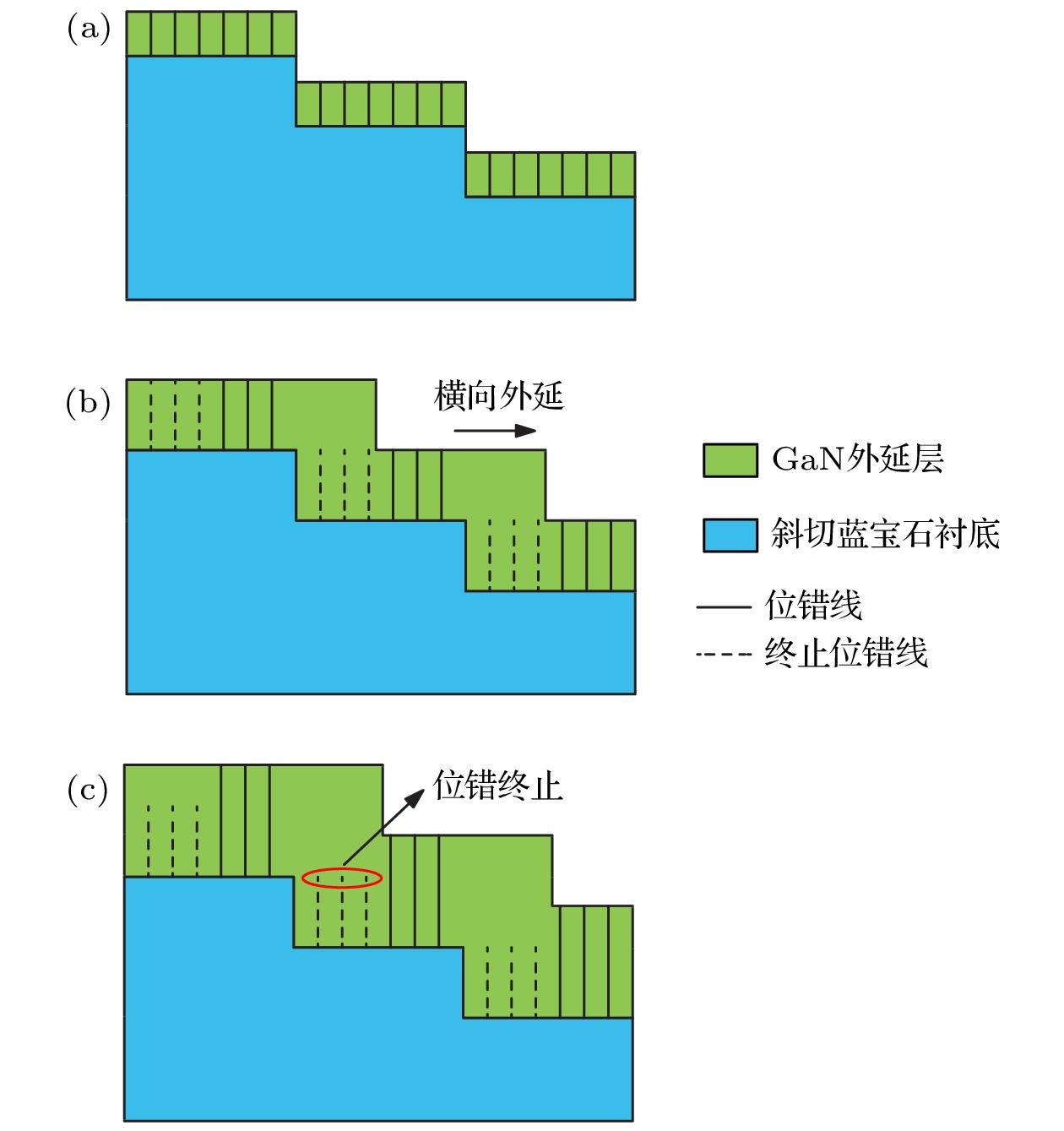
2023, 72 (19): 196101.
doi: 10.7498/aps.72.20230793
Abstract +
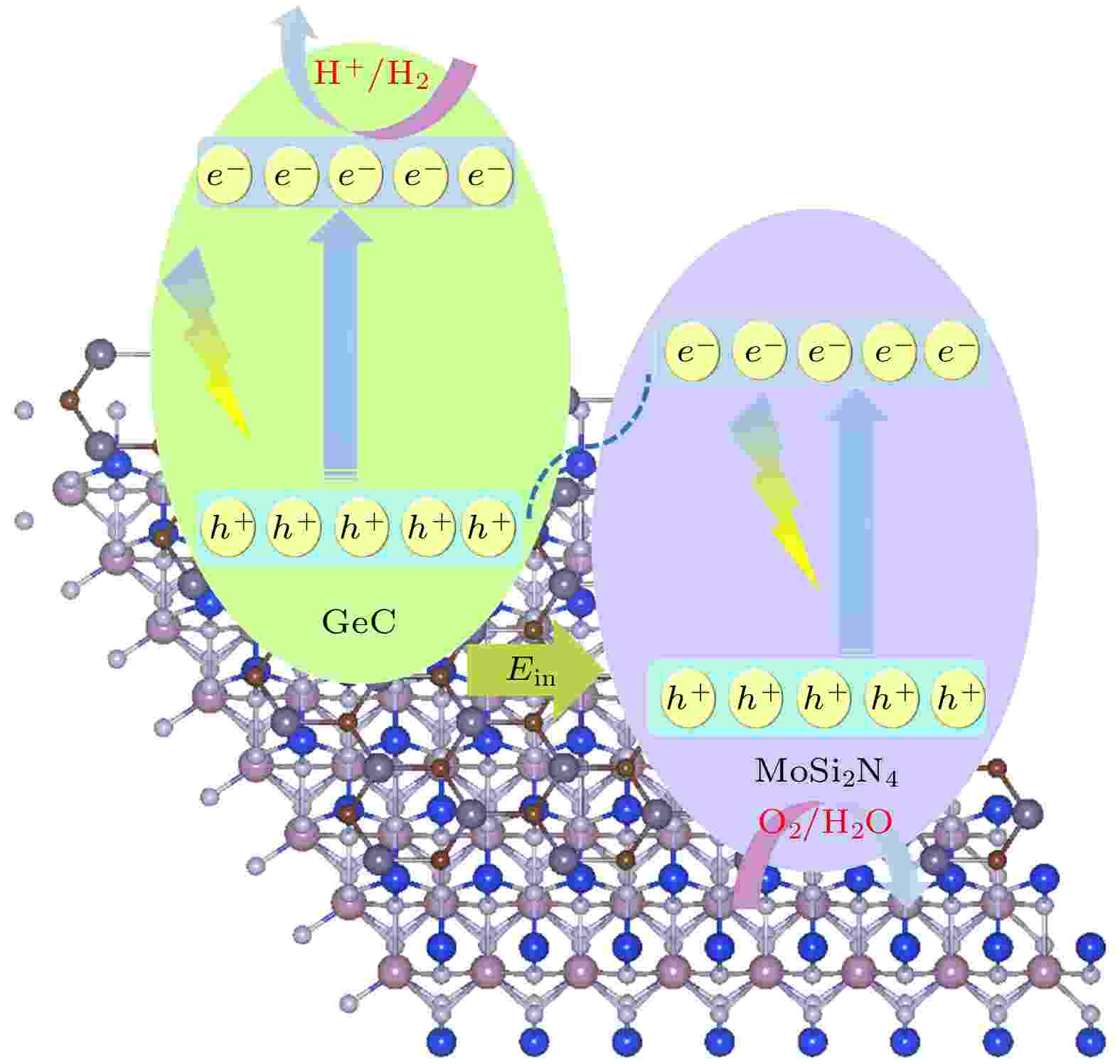
2023, 72 (19): 196102.
doi: 10.7498/aps.72.20230836
Abstract +
In this article, the first principles calculation method is used to study the MoSi2N4/GeC heterostructures, and calculate its structural, electronic, and optical properties. And the effects of different biaxial strains and vertical electric fields on the band structure and optical absorption characteristics of the heterostructures are also investigated. MoSi2N4/GeC heterostructure is an indirect bandgap semiconductor with a bandgap of 1.25 eV, with the built-in electric field direction pointing from the GeC layer to the MoSi2N4 layer. In addition, its photogenerated carrier transfer mechanism conforms to the S-type heterostructures mechanism, thus improving the oxidation reduction potential of photocatalytic water decomposition, making it fully meet the requirements of photocatalytic water decomposition with pH = 0–14. Under biaxial strain, the band gap first increases and then decreases with the increase of compressive strain, and the light absorption performance in the ultraviolet region increases with compressive strain increasing. The band gap decreases as tensile strain increases, and the light absorption performance in the visible light region is enhanced in comparison with its counterpart under compressive strain. Under a vertical electric field, the band gap increases with positive electric field increasing, and decreases with negative electric field increasing. In summary, MoSi2N4/GeC heterostructures can be used as an efficient photocatalytic material in some fields such as optoelectronic devices and photocatalysis.
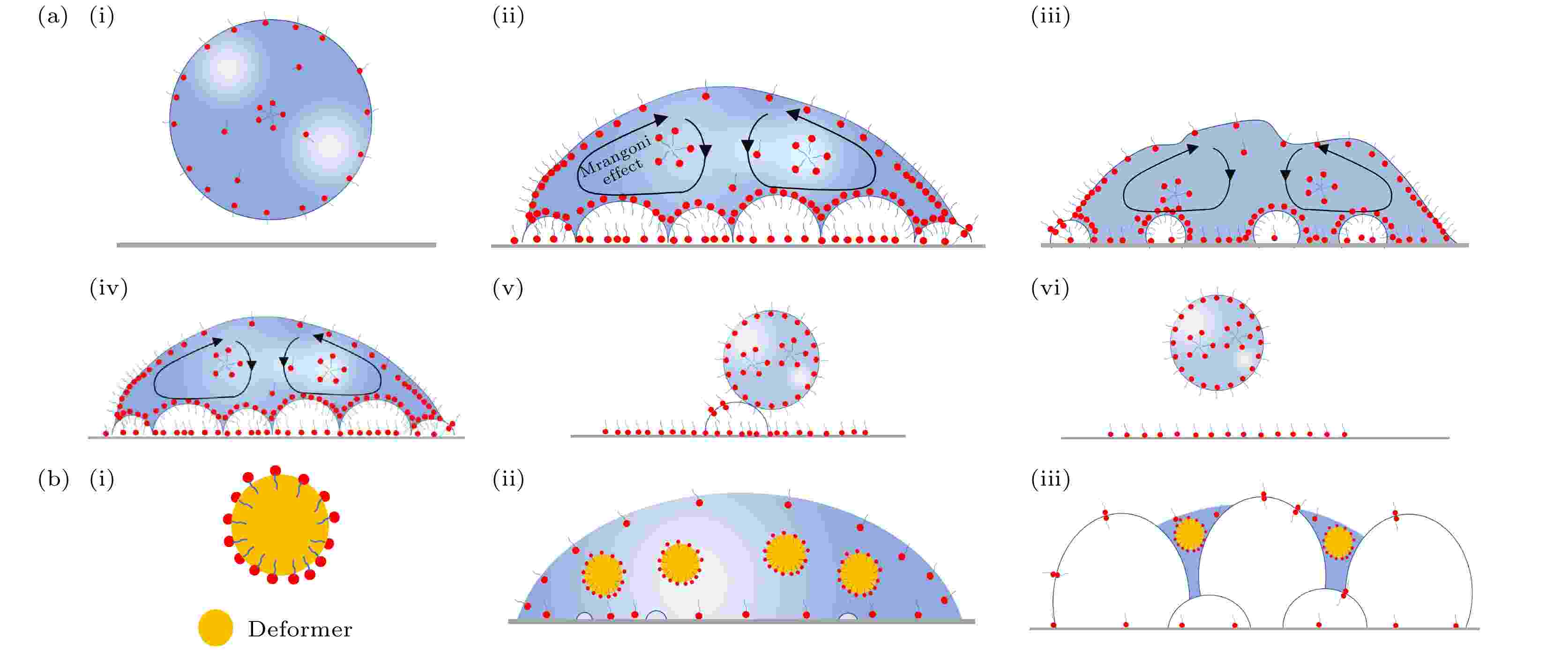
2023, 72 (19): 196801.
doi: 10.7498/aps.72.20230919
Abstract +
The dynamic processes of surfactant droplets impacting onto substrates of varied temperatures have been widely studied in heat transfer, cooling and printing. In this work, we observe the impacting process of aqueous droplets of surfactants SDS, CTAB, and Triton X-100 on a hot aluminum plate via a high-speed camera, in order to study the dynamics of different surfactant droplets impacting on a hot aluminum substrate. Experimentally, it is discovered that the surfactant droplets in transition boiling produce a secondary droplet of non-wetting state in the final stage of evaporation. The analysis demonstrates that after the droplet impacts the substrate, a temperature gradient is created between the top of the droplet and the triple-phase contact line, increasing the surfactant concentration near the triple-phase contact line as compared with that of the top. The top liquid is maintained by the Marangoni effect, which is caused by the concentration gradient. In the final stage of the evaporation process, the residual droplet gradually shrinks into a sphere. It is detached from the substrate and taken off under the impulse force of the bubble explosion at the bottom, generating the secondary droplet. The radius of the secondary drop increases with the raising of initial concentration of the drop, but ultimately reaches the saturation size. This work explains the role of surfactants in forming secondary droplets. Additionally, this work provides a reference for understanding the physical mechanism of Leidenfrost effect and the controlling of boiling heat transmission.
CONDENSED MATTER: ELECTRONIC STRUCTURE, ELECTRICAL, MAGNETIC, AND OPTICAL PROPERTIES
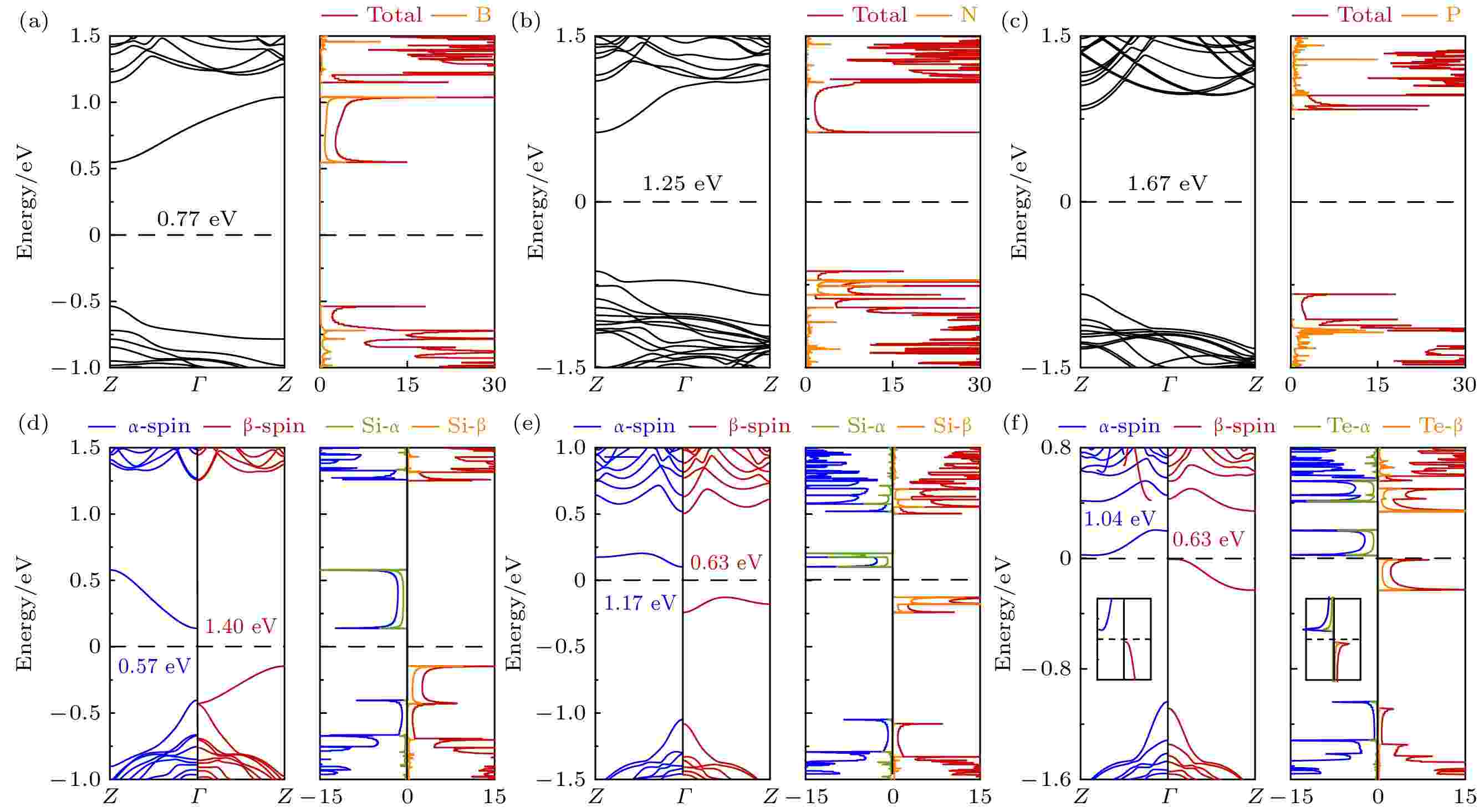
2023, 72 (19): 197101.
doi: 10.7498/aps.72.20230644
Abstract +
For the development of high performance magnetic devices, inducing magnetism in non-magnetic materials and flexibly regulating their magneto-electronic properties are very important. According to the density functional theory (DFT), we systematically study the structural stability, magneto-electronic properties, carrier mobility and strain effect for each of armchair arsenene nanotubes doped with non-metallic atoms X (X = B, N, P, Si, Se, Te). The calculated binding energy and formation energy confirm that the geometric stability of AsANT-X is high. With non-metal doping, each of AsANT-X (X = B, N, P) acts as a non-magnetic semiconductor, while each of AsANT-X (X = Si, Se, Te) behaves as a bipolar magnetic semiconductor, caused by the unpaired electrons occurring between X and As. Furthermore, by doping, the carrier mobility of AsANT-X can be flexibly moved to a wide region, and the carrier polarity and spin polarity in mobility can be observed as well. Especially, AsANT-Si can realize a transition among bipolar magnetic semiconductor, half-semiconductor, magnetic metal, and non-magnetic metal by applying strain, which is useful for designing a mechanical switch to control spin-polarized transport that can reversibly work between magnetism and demagnetism only by applying strain. This study provides a new way for the application of arsenene.
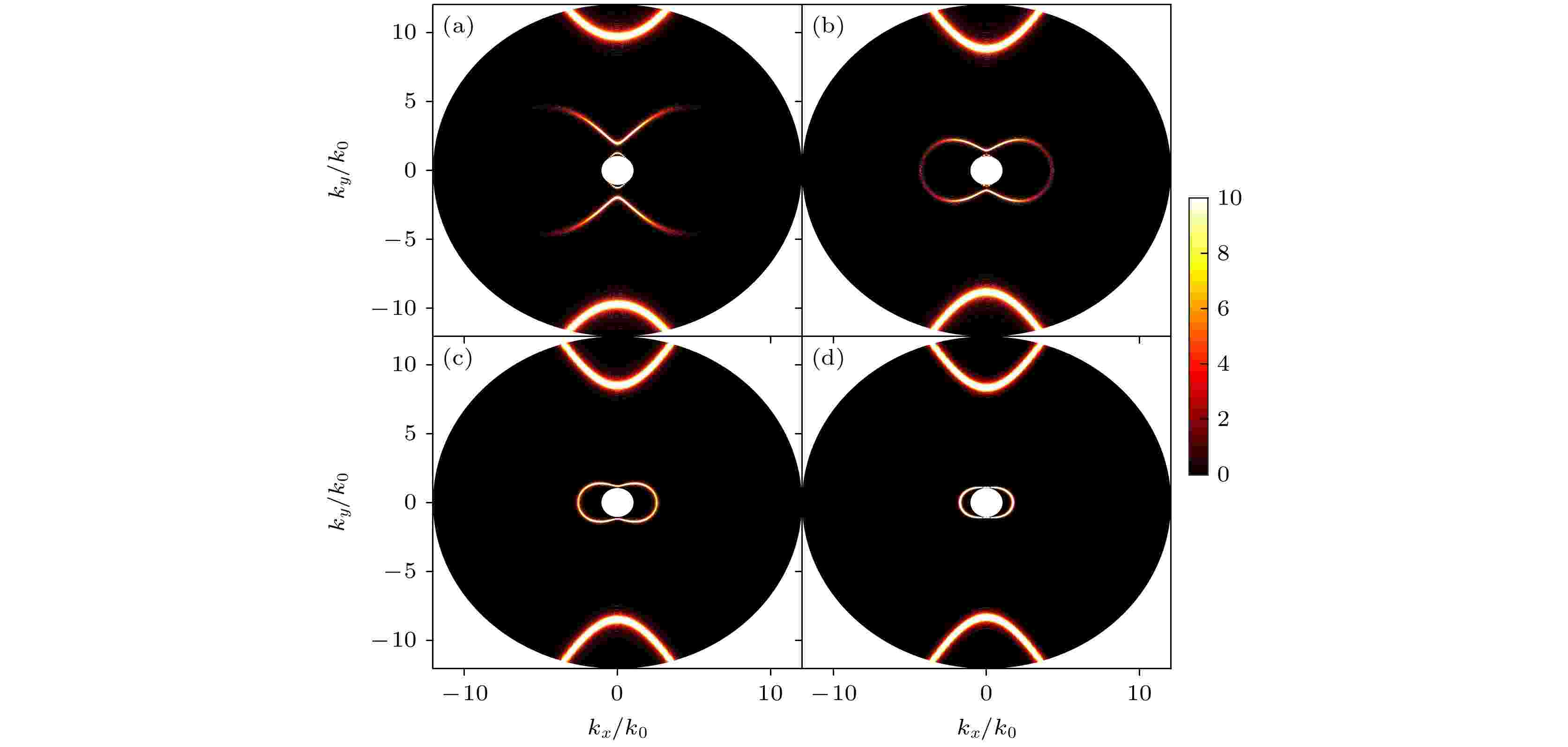
2023, 72 (19): 197102.
doi: 10.7498/aps.72.20230167
Abstract +
Surface phonon polaritons (SPhP) as an alternative constituent for mid-infrared (MIR) nanophotonic applications have attracted extensive attention and they maybe solve the intrinsic loss problem of plasmonics. SPhP arise in polar dielectrics due to IR-active phonon resonances, leading to negative permittivity within the Reststrahlen band. Although SPhP have great potential in enhancing the interaction between light and matter in the infrared region, it is still limited to enhance optical fields and fixed resonance band because of the existing Reststrahlen band. Moreover, active manipulating of phonon polaritons in MIR range remains elusive. The significant research progress of natural van der Waals (vdW) crystal and heterostructures have been made, which are characterized by an anisotropic polaritonic response, leading to elliptical, hyperbolic, or biaxial polaritonic dispersions. Among these structures, SPhP with hyperbolicity in α-MoO3 are of particular interest, due to not only the strong field confinement, low losses, and long lifetimes, but also the natural in-plane anisotropic dispersion. A heterostructure composed of a biaxial vdW material (α-MoO3) and a Weyl semimetal (WSM) is proposed to study the active tunability of anisotropic SPhP. The control of polaritons can show more degrees of freedom, which has not yet been addressed. Under the incident condition of transverse magnetic incident wave, the reflection coefficient and field distribution in the heterogeneous system are accurately solved by the 4×4 transfer matrix method, and the dispersion properties of anisotropic SPhP are described in detail. Variation of dispersion spectrum with azimuthal angle and α-MoO3 thickness is presented. The research results indicate that mode hybridization and dispersion manipulation can be realized by controlling the azimuth angle and the thickness of α-MoO3. More importantly, the Fermi level of WSM enable the adjustment of dynamic dispersion curve, which depends on the change of external temperature. Isofrequency curves of hybridized SPhP at different Fermi levels are also demonstrated. By chemically changing the Femi level of α-MoO3, the topology of polariton isofrequency surfaces transforms from open shape to closed shape as a result of polariton hybridization. Therefore, our research is helpful in further optimizing and designing active optoelectronic devices based on vdW materials, which have good application prospects in infrared heat radiation and biosensing.
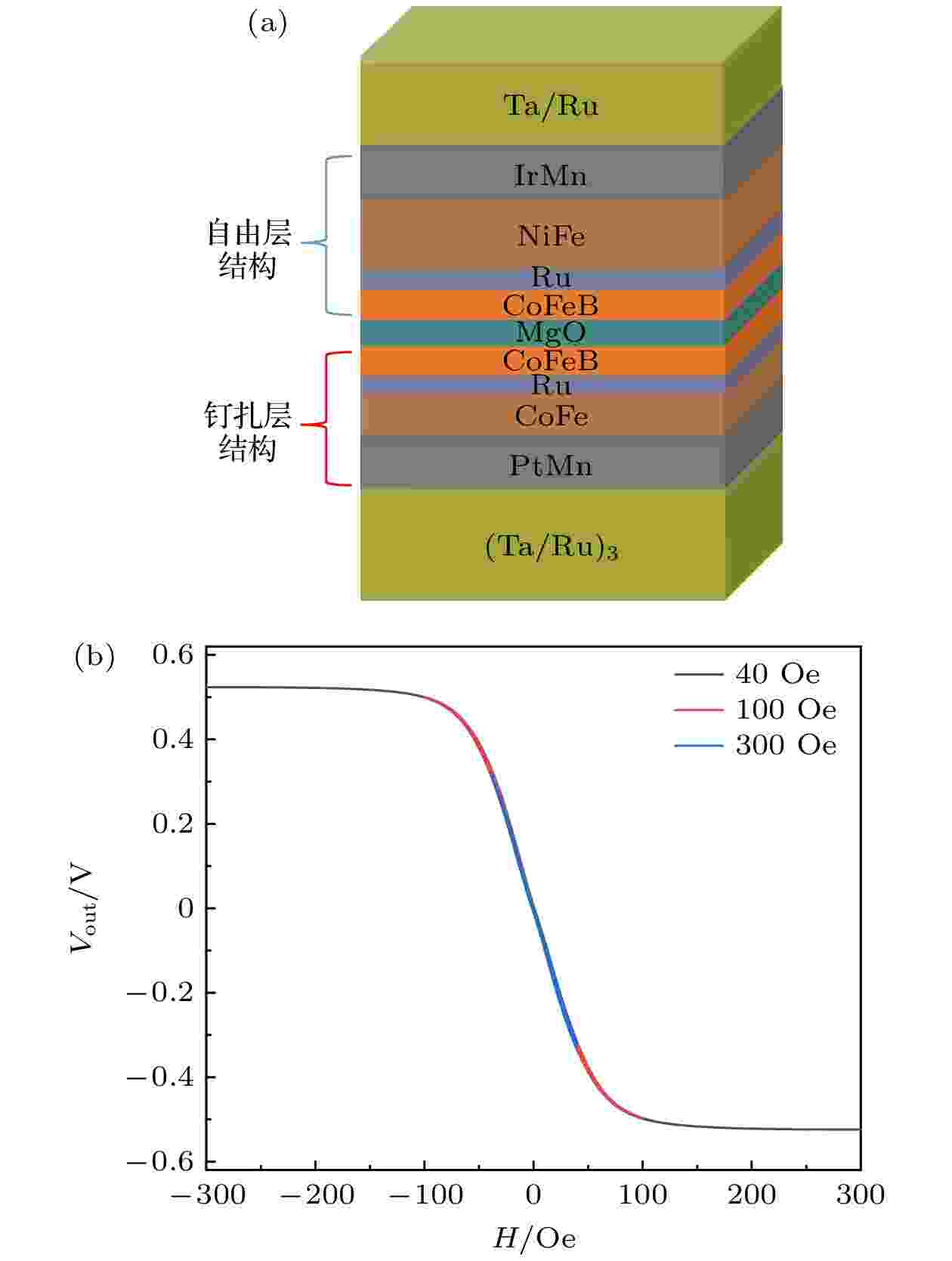
EDITOR'S SUGGESTION
Key performance of tunneling magnetoresistance sensing unit modulated by exchange bias of free layer
2023, 72 (19): 197103.
doi: 10.7498/aps.72.20231003
Abstract +
Optimizing sample structural parameters, magnetic field annealing, series-parallel bridge design, current thermal effect, and additional bias magnetic field are common methods used for controlling the tunneling magnetoresistance (TMR) magnetic sensing performance. By employing these methods, key performance parameters of TMR sensors such as sensitivity, noise resistance index, linearity, and linear magnetic field range can be optimized and improved. Changing the sample structural parameters, such as the pinning layer, free layer, and barrier layer materials and thickness of the TMR magnetic sensing unit, can change the exchange bias field and thus enhance the TMR magnetic sensing performance parameters. In this study, through micromagnetic simulation and experimental measurements, it is discovered that by modifying the exchange coupling in the free layer CoFeB/Ru/NiFe/IrMn, the exchange bias field magnitude of the TMR free layer can be modulated, leading to improved performance of the TMR magnetic sensing unit. As the IrMn pinning effect is gradually enhanced, the linear magnetic field range of the TMR magnetic sensing unit increases, but the magnetic field sensitivity decreases. It is further found that the linearity of the TMR magnetic sensor is optimal within a range of ±0.5 times the magnetic moment variation of the free layer (primarily the CoFeB layer). Through our work, the effect of exchange bias field (caused by the pinning IrMn of the free layer) on the magnetic sensing performance is verified in the TMR magnetic sensing unit. Our work demonstrates more possibilities for designing and optimizing TMR magnetic sensors, enriching the dimensions of magnetic sensing performance modulation.
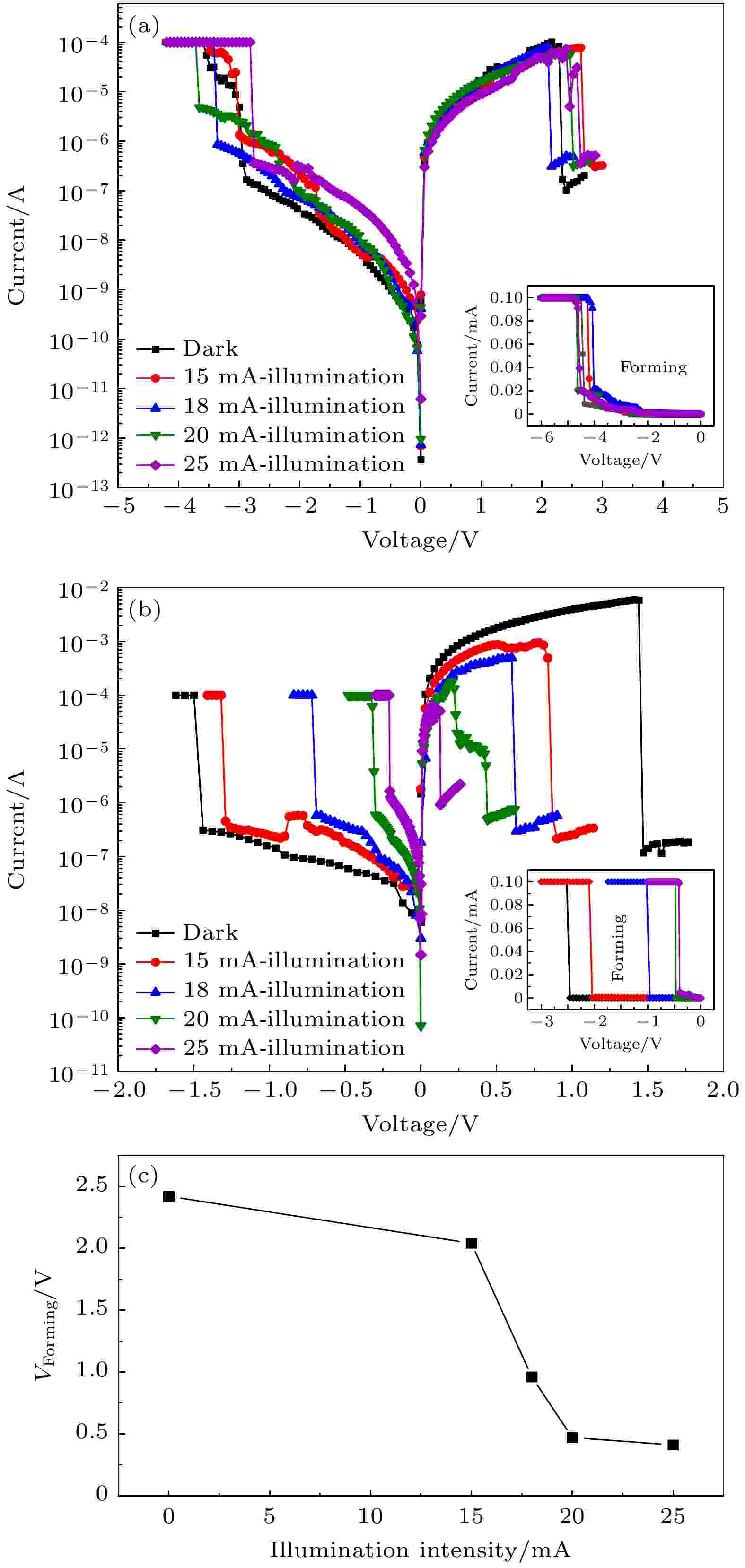
2023, 72 (19): 197201.
doi: 10.7498/aps.72.20230797
Abstract +
Cu/HfOx/Pt and Cu/HfOx-ZnO/Pt resistance random access memory (RRAM) devices are prepared by magnetron sputtering. The results show that the Cu/HfOx/Pt device has the stable bipolar resistive switching characteristics, good retention (as long as 104 s), and a switching ratio greater than 103. The current conduction mechanism of HfOx device is ohmic conduction at low resistance, while space charge limited current (SCLC) mechanism dominates at high resistance, and the conductive filament is composed of oxygen vacancies. Owing to the low content and random distribution of oxygen defects in the HfOx film, the endurance and uniformity of the device are poor. Compared with HfOx device, HfOx-ZnO device exhibits lower operating voltage and better uniformity and stability. The main reason is that ZnO material has smaller formation energy of oxygen vacancy, which can produce more oxygen defects under electric field to participate in the resistive switching behavior of the device, thereby reducing the operating voltage and improving the uniformity of the device. In addition, owing to the existence of the interface between HfOx and ZnO film, the random distribution of oxygen defects is inhibited, that is, the random fracture and formation of conductive filament are inhibited, which is beneficial to improving the uniformity of the device. In addition, the resistive switching behaviors of Cu/HfOx/Pt and Cu/HfOx-ZnO/Pt RRAM devices under different intensities of 255 nm ultraviolet illumination are studied. For Cu/HfOx/Pt device, the light of 255 nm wavelength shows little effect on its resistive switching characteristics. For the Cu/HfOx-ZnO/Pt RRAM device, the operating voltage and stability of the device can be improved by increasing the light intensity. Although the switching ratio of the device decreases with the increase of light intensity, the device can exhibit multiple resistance states by adjusting different light intensities to achieve multi-level storage. Finally, the analysis of the I-V curves of the devices indicates that the two types of devices show similar resistive switching mechanisms under the illumination of light or no light, which can be explained by the resistive switching mechanism of oxygen vacancy conductive filament. Therefore, a physical model based on the oxygen vacancy conductive filament is established to explain the resistive switching behavior of the device in this paper.
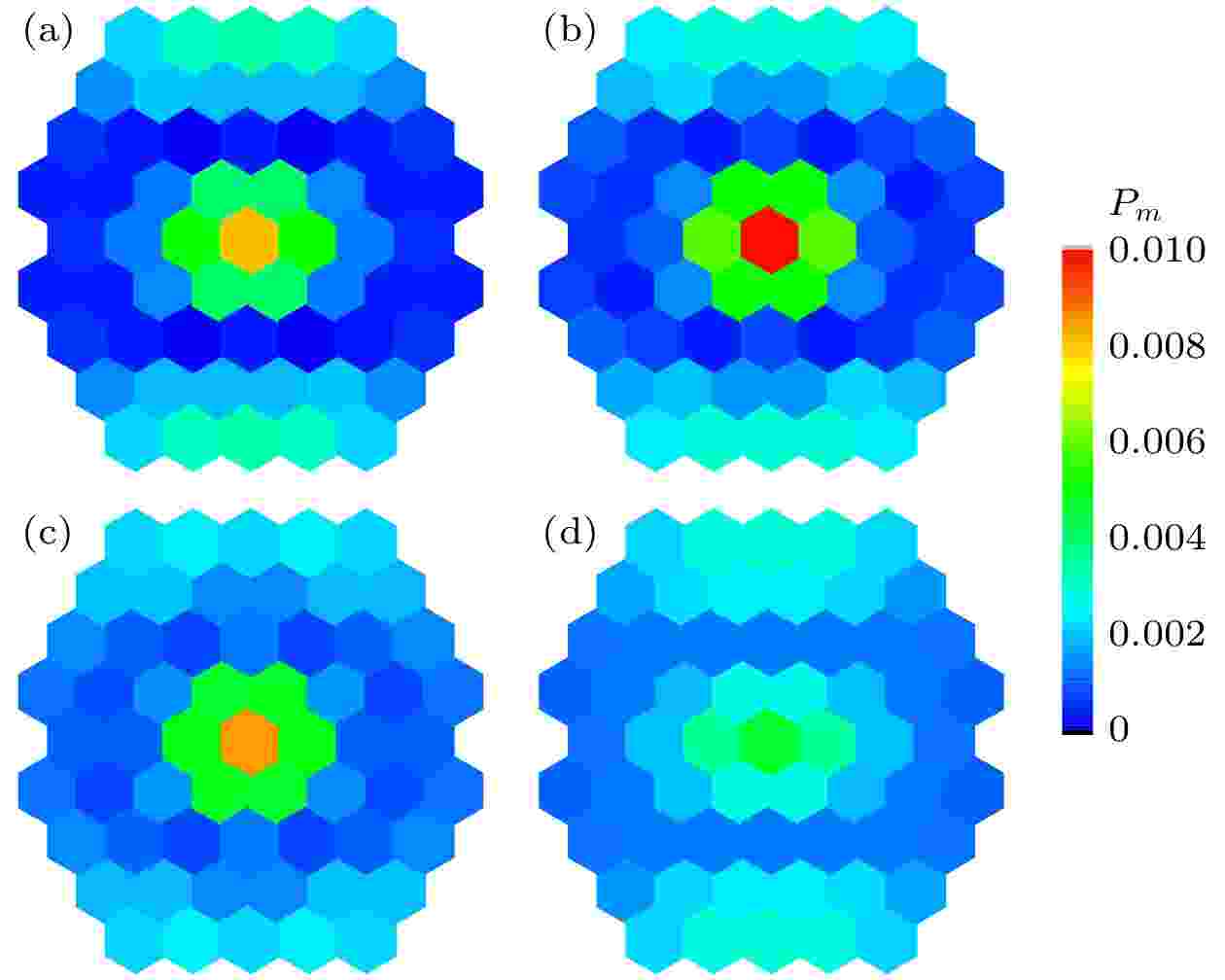
EDITOR'S SUGGESTION
2023, 72 (19): 197301.
doi: 10.7498/aps.72.20230476
Abstract +
Excitation energy transfer is one of the most important factors affecting the applications of para-sexiphenyl devices. The study of exciton dynamics and exciton coherence effect of para-sexiphenyl clusters under external field excitation is important in order to improve the performance of molecular devices composed of para-sexiphenyl and its related derivatives. In this work, the two-dimensional disc-like para-sexiphenyl molecular cluster is used as the object of study. The molecular system is simplified into a two-level model based on its structural features and energy level distribution. Within the framework of density matrix theory, the exciton dynamics and exciton coherence behavior of disk-like para-hexaphene molecular clusters excited by different pulse fields are analyzed through using the mathematical mean value approximation of the operator. The results show that when long pulses are used to excite para-sexiphenyl clusters, the single exciton state characteristic appears and is insensitive to the change of excited external field strength. When the clusters are subjected to strong pulsed fields with short pulse widths, multiple excitons are excited simultaneously in the cluster, forming multiple exciton states, with the exciton energy levels shifting toward lower energy and new hybrid states appearing. In the optical response spectrum, there appear multiple resonance peaks. And as the pulse field is enhanced, the multi-exciton effect becomes apparent and the hybridization energy level increases. Under short pulse excitation, the excited states are distributed differently in different energy regions, but all of them show obvious symmetry. As the highest-energy exciton states of H-type clusters are preferentially excited, we analyze the exciton state population and the exciton coherence evolution with time in the high-energy exciton state. With the pulse field increases, Rabi oscillations appear and the exciton coherence effect increases. When the pulsed field reaches a certain field strength, the exciton oscillation cooperativity disappears in the first 100 fs, showing the non-local characteristic. The position of the wave trough of the exciton state population corresponds to the peak in the exciton coherence size. It indicates that when the pulse field is intense enough, a large number of molecules are in the exciton coherent state during the pulsed excitation, and transient out-of-domain phenomena occur.
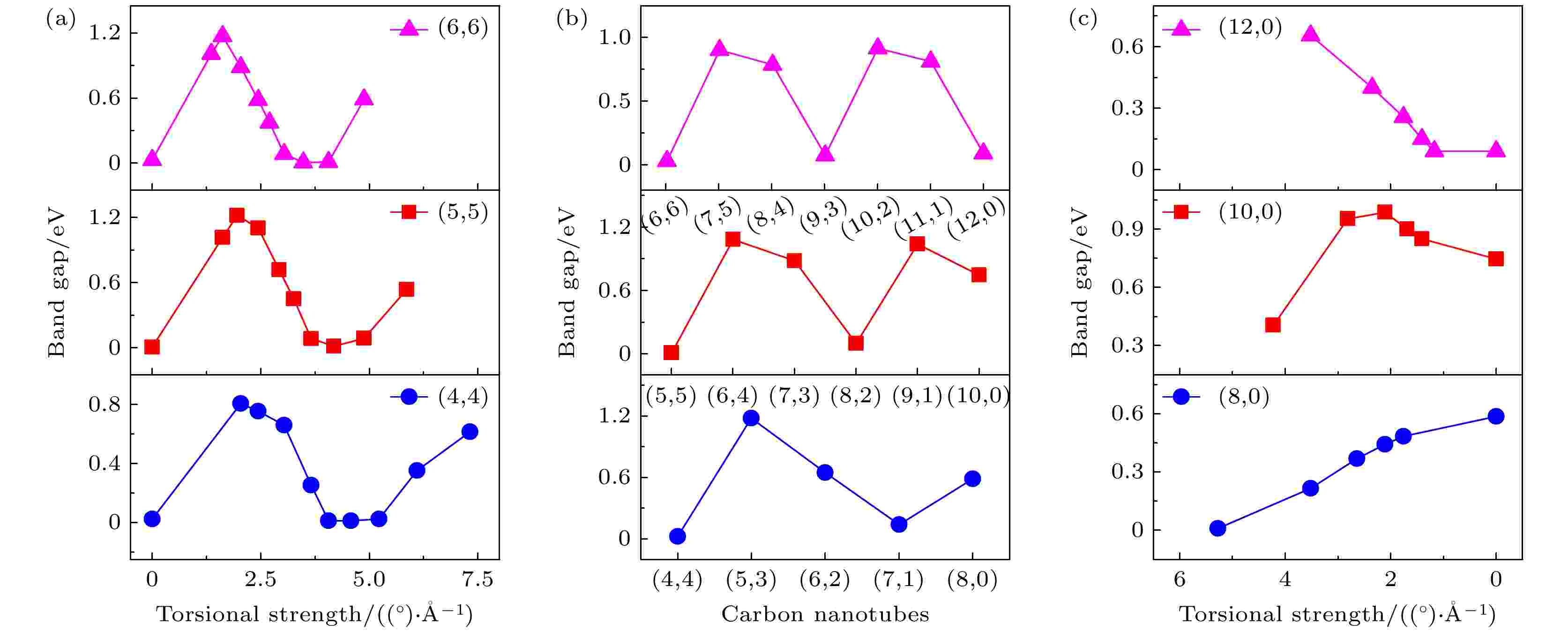
2023, 72 (19): 197302.
doi: 10.7498/aps.72.20230566
Abstract +
The controllable band gap of single-walled carbon nanotube (SWCNT) has become a research hotspot. This study introduces a torsional model that involves each rotating carbon atom along the axial direction of SWCNT, and a detailed description of the model creation process. Two guidelines for constructing the model are proposed, and the self-consistency of the torsion model is established through first-principles density functional theory. Initially, the band gap map of SWCNTs under torsion is present. As the twist strength increases, the band gap of SWCNT undergoes several phase transitions, including semiconductor-metal transition and metal-semiconductor transition. Moreover, we investigate the variations in the average bond length, average bond angle, and diameter of SWCNT under torsion. Furthermore, this work turns to the analysis of carbon atomic energy statistics, revealing distinct energy changes for different types of single-walled carbon nanotubes under identical torsion intensity. The findings shed light on the controllable band gap of SWCNTs, offering a theoretical foundation for the development of nanoelectronic devices and microintegrated circuits utilizing single-walled carbon nanotubes. In conclusion, this research presents a novel approach for exploring the controllable band gap of single-walled carbon nanotube through torsional manipulation. Theoretical insights into the behavior of SWCNTs under torsion provide valuable contributions to the field and pave the way for potential applications in nanoelectronics and microintegrated circuits.
INTERDISCIPLINARY PHYSICS AND RELATED AREAS OF SCIENCE AND TECHNOLOGY
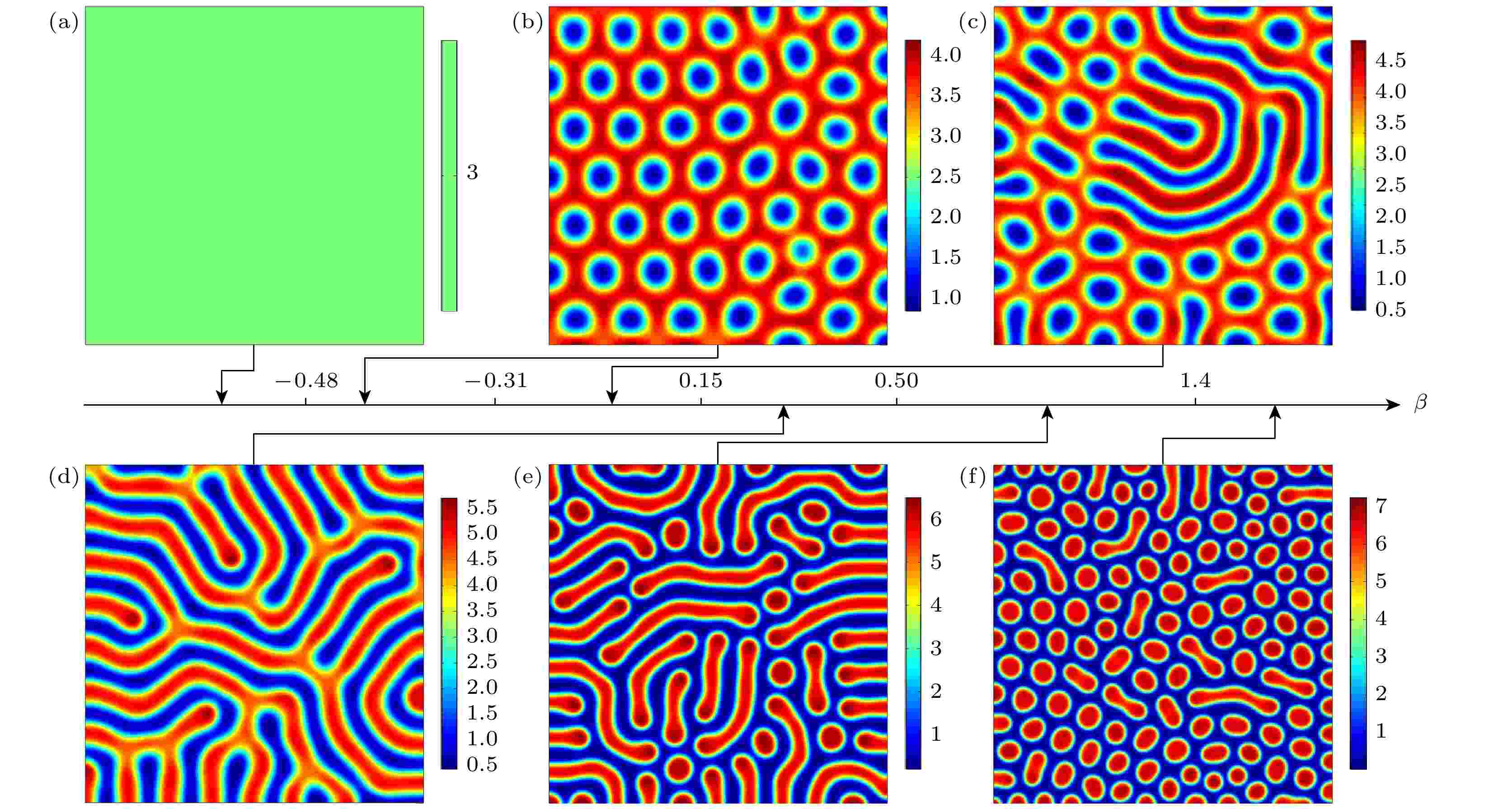
EDITOR'S SUGGESTION
2023, 72 (19): 198201.
doi: 10.7498/aps.72.20230333
Abstract +
Cross-diffusion is one of the most important factors affecting the formation and transition of Turing patterns in reaction diffusion systems. In this paper, cross-diffusion is introduced into a reaction diffusion Brusselator model to investigate the effects of the directivity and density-dependence of cross-diffusion on Turing pattern transition. Turing space is obtained by the standard linear stability analysis, and the amplitude equations are derived based on weakly nonlinear method, by which Turing pattern selection can be determined theoretically. It is found that the degree of deviation from the primary Turing bifurcation point plays an important role in determining the process of pattern selection in the Turing region. As the deviation from onset is increased, the system exhibits a series of pattern transitions from homogenous state to honeycomb hexagonal pattern, to stripe pattern, and then to hexagonal spot pattern. In the case of one-way cross-diffusion, the direction of cross-diffusion determines the order of Turing pattern transition. The cross-diffusion from the inhibitor to the activator enhances the Turing mode and drives the system far away from the primary bifurcation point, resulting in the forward order of Turing pattern transition. On the contrary, the cross-diffusion from the activator to the inhibitor suppresses the Turing mode and forces the pattern transition in a reverse order. In the case of two-way cross-diffusion, the cross-diffusion effect from inhibitors to activators is stronger than that from activators to inhibitors with the same diffusion coefficient. Essentially, the cross-diffusion coefficient is dependent on not only the local concentration of species itself, but also the concentrations of other species due to their interaction. It is found that concentration dependent cross diffusion also affects the transformation direction of Turing pattern. When the diffusion coefficient $ {D_{uv}} $ is linearly dependent on the concentration of retarders, the positive transformation of the Turing pattern is induced with the increase of the concentration linear adjustment parameter $ \beta $ . On the contrary, when the diffusion coefficient $ {D_{vu}} $ is linearly dependent on the concentration of active particles, the reverse transformation of the Turing pattern is induced. The numerical simulation results are consistent with the theoretical analysis.
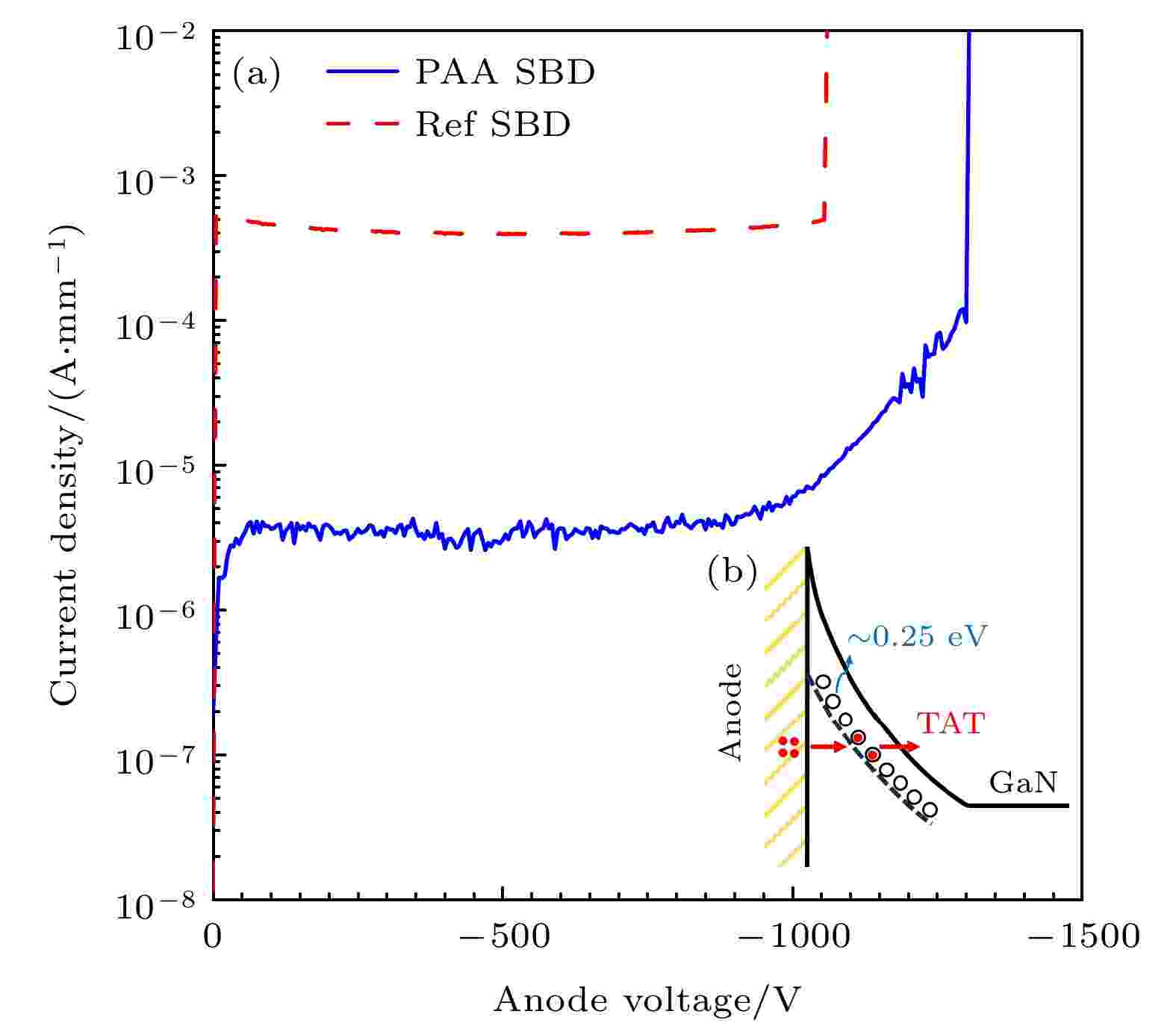
Interface-state suppression of AlGaN/GaN Schottky barrier diodes with post-anode-annealing treatment
2023, 72 (19): 198501.
doi: 10.7498/aps.72.20230553
Abstract +
Owing to the high density and high mobility of two-dimensional electron gas (2DEG) induced by strong spontaneous polarization and piezoelectric polarization effect, AlGaN/GaN Schottky barrier diodes (SBDs) with high output current density and low on-resistance have proved to be a promising candidate. Anode of GaN SBD is the core structure, which affects the device performance such as turn-on voltage, reverse current, on-resistance, and breakdown voltage. Therefore, idealized Schottky junction with low interface state density is very important in achieving high-performance GaN SBD. In this work, AlGaN/GaN SBD with low work-function metal W as anode is fabricated, and the post-anode-annealing (PAA) treatment is found to be effective in promoting the bonding reaction between anode metal and GaN in the anode region. Comparing with GaN SBDs without PAA treatment, the interface state density decreases from 9.48×1015 eV–1·cm–2 to 1.77×1013 eV–1·cm–2 after PAA treatment. The reverse leakage current is reduced by two orders, which ascribes to the idealized anode interface with low interface state density. Meanwhile, the influence of interface state on carriers in the forward conduction process is also suppressed, and the differential on-resistance of the fabricated GaN SBDs decreases from 17.05 Ω·mm to 12.57 Ω·mm. It is obvious that the PAA process proves to be an effective method to suppress the interface states density at M/S interface, thus significantly improving the performance of GaN SBD, which is the key technology in fabricating the high-performance GaN device.
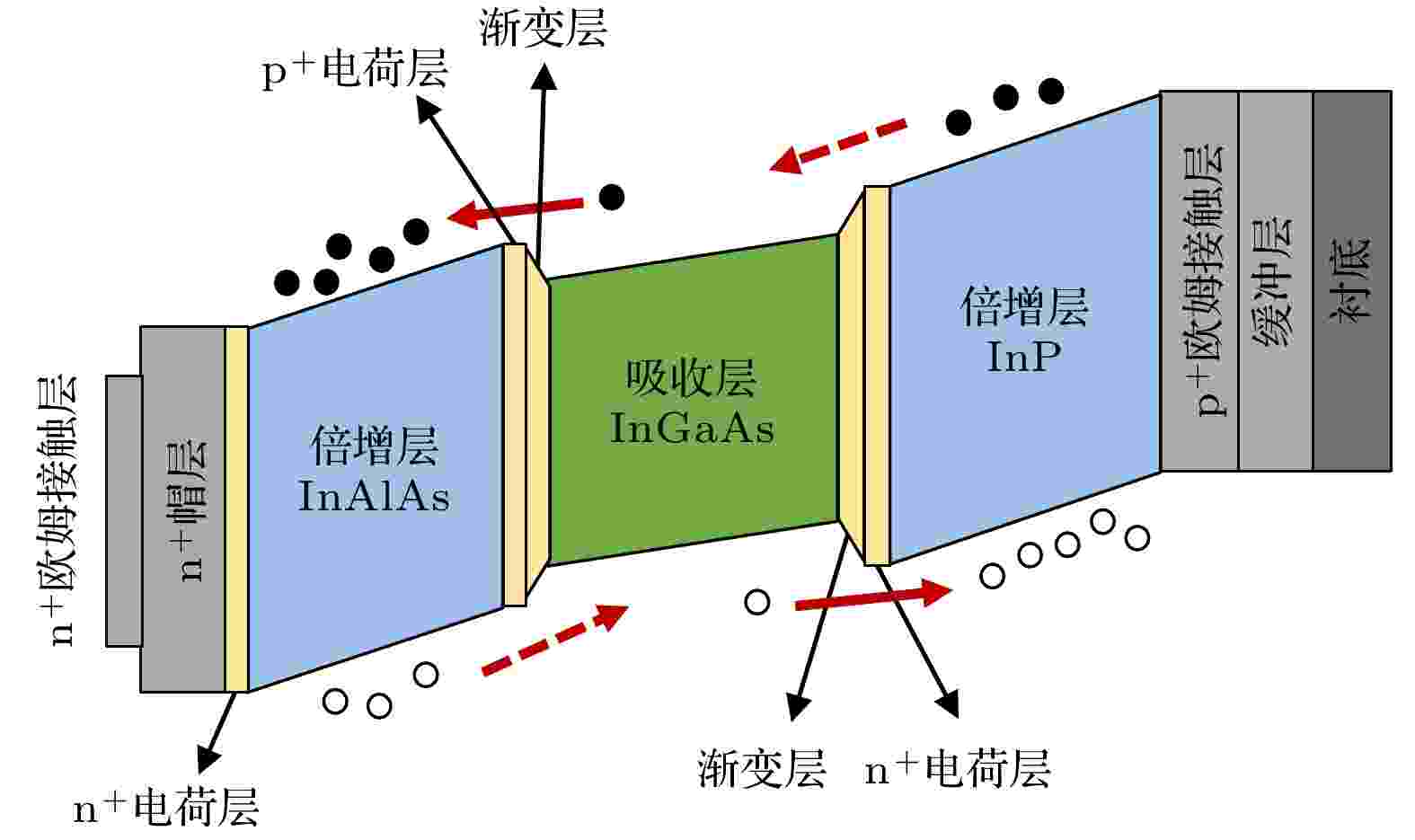
2023, 72 (19): 198502.
doi: 10.7498/aps.72.20230885
Abstract +
Avalanche photodiodes are widely used in various fields, such as optical communication and laser radar, because of their high multiplication. In order to adapt to very weak signal detection applications, devices are required to have higher gain values. The existing avalanche photodiodes generally use single carrier multiplication mode of operation, its multiplication effect is limited. In this paper is designed an InP/In0.53Ga0.47As/In0.52Al0.48As avalanche photodiode structure with electrons and holes jointly involved in multiplication. In this structure, In0.53Ga0.47As material is used for the absorption layer, InP material is used for the hole multiplication layer, In0.52Al0.48As is used for the electron multiplication layer, and the two multiplication layers are distributed on the upper side and lower side of the absorber layer. Under the reverse bias, the photogenerated electrons and the absorber-layer generated holes can enter into the respective multiplier layers in different directions and create the avalanche multiplication effect, so that the carriers are fully utilized. This structure and the conventional single multiplication layer structure are simulated by Silvaco TCAD software. Comparing the single InP multiplication layer structure with the single In0.52Al0.48As multiplication layer structure, the gain value of the double multiplication layer structure at 95% breakdown voltage is about 2.3 times and about 2 times of the former two, respectively, and the device has a larger gain value because both carriers are involved in multiplication in both multiplication layers at the same time. The structure has a dark current of 1.5 nA at 95% breakdown voltage, which does not increase in comparison with the single multiplication layer structure, owing to the effective control of the electric field inside the structure by multiple charge layers. Therefore, this structure is expected to improve the detection sensitivity of the system.
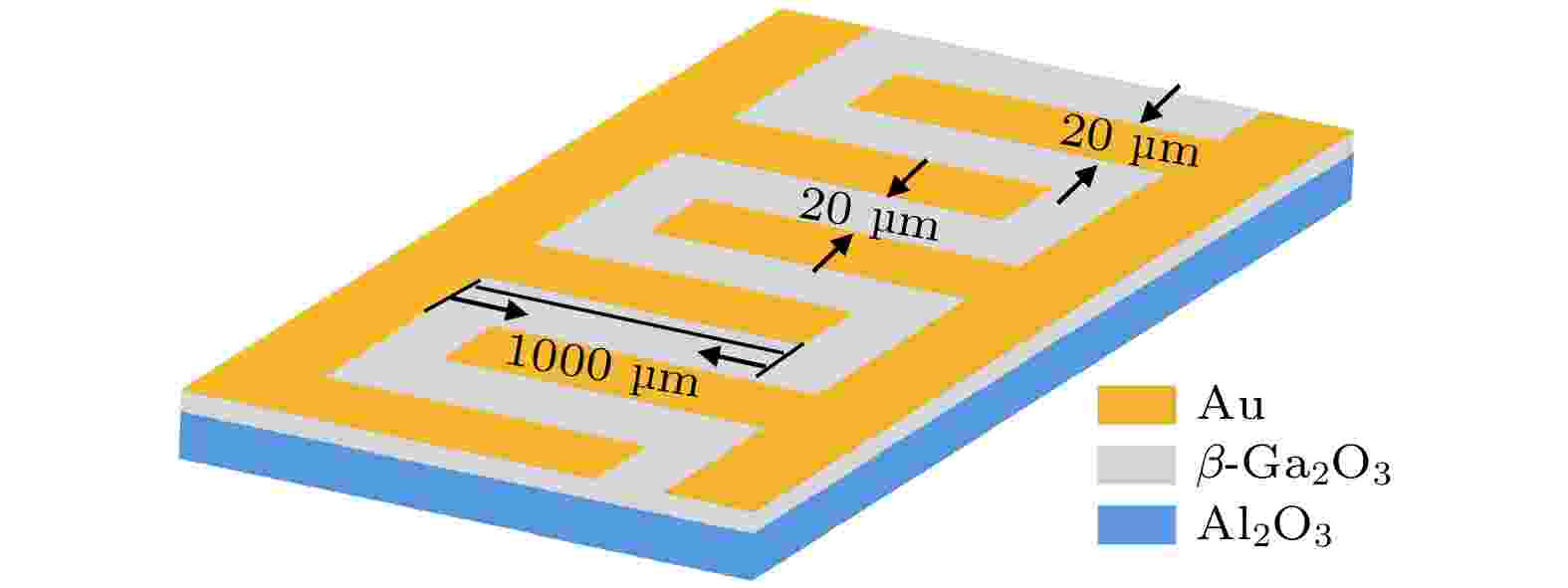
2023, 72 (19): 198503.
doi: 10.7498/aps.72.20230971
Abstract +
Solar-blind UV photodetectors (SBPs) have attracted great attention because they are widely used in missile tracking, fire detection, biochemical analysis, astronomical observations, space-to-space communications, etc. At present, it is found that wide bandgap semiconductor materials such as AlxGa1-xN, Mg1Zn1-xO, diamond and β-Ga2O3 are ideal semiconductor materials for developing high-performance SBPs. The ultra-wide band gap semiconductor material, β-Ga2O3, has a large band gap width of 4.9 eV, strong breakdown electric field, absorption edge located in the solar blind ultraviolet band (200–280 nm), and it also has high transmittance in the near ultraviolet and the whole visible band. Therefore, β-Ga2O3 is a very suitable material for making solar blind UV photodetectors. However, the p-type β-Ga2O3 is difficult to dope, which limits the further development of β-Ga2O3 devices. In this work, the β-Ga2O3 thin films with different Cu doping content are grown on sapphire substrates by chemical vapor deposition method, and the morphology, crystal structure and optical properties of β-Ga2O3 films are measured. The test results show that the surfaces of β-Ga2O3 films with different Cu content are relatively smooth, and the ($ \bar 201 $ ) diffraction peak positions shift toward the lower degree side with the increase of Cu content, which indicates that Cu2+ replaces Ga3+ and enters into the β-Ga2O3 lattice. The optical absorption spectrum measurement indicates that the energy gaps of samples are evidently narrowed with the increase of Cu doping concentration. Hall measurements indicate that the Cu doped β-Ga2O3 thin films have a p-type conductivity with a hole concentration of 7.36 × 1014, 4.83 × 1015 and 1.69 × 1016 cm–3, respectively. In addition, a photoconductive UV detector with metal-semiconductor-metal structure is prepared by evaporating Au on a Cu-doped β-Ga2O3 thin film, and its UV detection performance is studied. The results show that the photocurrent value of the device increases with Cu content increasing. The photo-to-dark current ratio (Il/Id) is about 3.8×102 of 2.4% Cu content device under 254 nm-wavelength light at 10 V. The rise time and decay time are 0.11 s and 0.13 s, respectively. Furthermore, the responsivity and external quantum efficiency can reach 1.72 A/W and 841% under 254 nm-wavelength light with a light intensity of 64 μW/cm2.

2023, 72 (19): 198504.
doi: 10.7498/aps.72.20230901
Abstract +
The effect of spin-orbit torque (SOT) provides a new method of implementing ultra-low power spintronic devices. The in-plane exchange bias (EB) field in antiferromagnetic material can effectively assist SOT magnetization switching. Meanwhile, the utilization of voltage-controlled magnetic anisotropy (VCMA) can effectively reduce the switching barrier. Taking advantage of the EB and VCMA effect, it is possible to realize SOT magnetic tunnel junctions without external field assistance. In this work, a spin-orbit torque magnetic tunnel junction model composed of antiferromagnetic/ferromagnetism/oxides without external magnetic field is developed by solving the modified Landau-Lifshitz-Gilbert (LLG) modular equation, and its magnetization dynamics is analyzed and studied. The effective fields in the model include the demagnetization field, thermal noise field, perpendicular magnetic anisotropy field with VCMA effect, and exchange bias field. Taking IrMn/CoFeB/MgO material system for example, the factors affecting the precession of magnetization are investigated, such as the effect of the exchange bias field, the VCMA effect and the mechanism of SOT field-like torque. Considering the practical applications, the effect of the deviation of the fabrication process of magnetic tunnel junctions is also analyzed. The simulation results demonstrate that the combined effect of $ {{\boldsymbol{H}}_{{\text{EB}}}} $ with VCMA effect can greatly reduce the critical ISOT, thus assisting and realizing the complete field-free magnetization reversal; the SOT field-like torque plays a dominant role in realizing the magnetization reversal, and by adjusting the ratio of the SOT field-like torque to the damping-like torque, field free switching can be realized in the device at the ps grade ; and the MTJ can realize effective switching when the deviation of oxide thickness $ {\gamma _{{\text{tf}}}} \leqslant 10{\text{%}} $ or the deviation of free layer thickness $ {\gamma _{{\text{tox}}}} \leqslant 13{\text{%}}$ . Spin-orbit torque devices based on the antiferromagnetic without external magnetic field will provide highly promising solutions for a new-generation ultra-low power, ultra-high speed, and ultra-high integration devices and circuits.
GEOPHYSICS, ASTRONOMY, AND ASTROPHYSICS
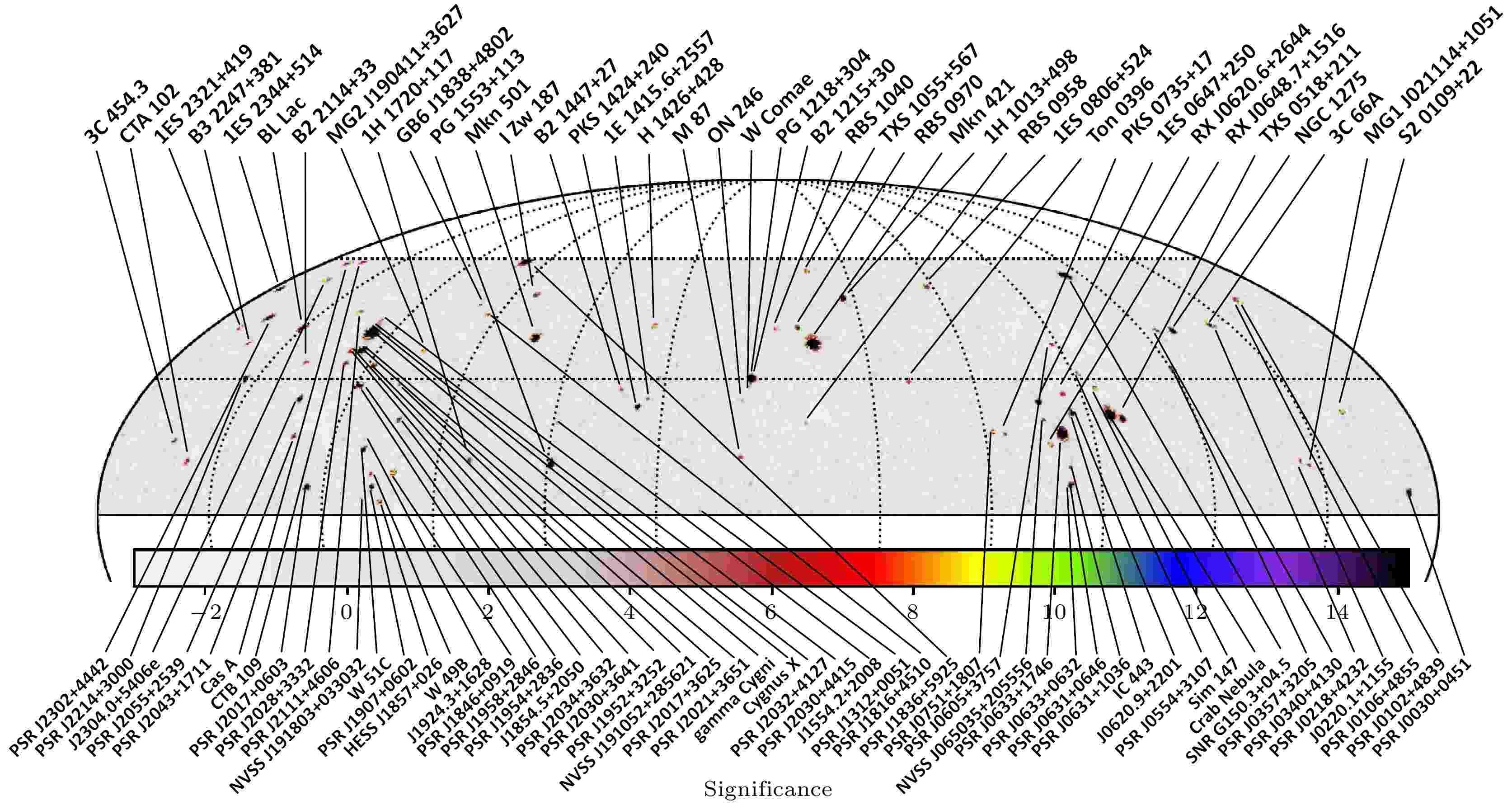
EDITOR'S SUGGESTION
2023, 72 (19): 199501.
doi: 10.7498/aps.72.20230977
Abstract +
High altitude detection of astronomical radiation (HADAR) is an innovative array of atmospheric Cherenkov telescopes that employs pure water as its medium. By utilizing large-aperture hemispherical lenses, HADAR can capture atmospheric Cherenkov light, enabling the detection of gamma rays and cosmic rays in the energy range of 10 GeV to 10 TeV. Compared to traditional Imaging Atmospheric Cherenkov telescopes, HADAR offers distinct advantages such as a low energy threshold, high sensitivity, and a wide field of view. The telescope mainly consists of a hemispherical lens with a diameter of 5 m acting as a Cherenkov light collector, a cylindrical metal tank with a 4 m radius and 7 m height, and an imaging system at the bottom of the tank. The sky region covered by HADAR is much larger than the current generation of Imaging Atmospheric Cherenkov Telescopes. The field of view of HADAR can reach up to 60 degrees. Its continuous scanning capability allows for comprehensive observations of gamma-ray sources throughout the entire celestial sphere, making it an ideal instrument for studying transient and variable sources. In this study, the observational capabilities of HADAR are thoroughly investigated using the latest 4FGL-DR3 and 4LAC-DR3 gamma-ray source catalogs from Fermi-LAT. For extragalactic sources, the energy spectra in the high energy range have been extrapolated to the very high energy range, taking into account the absorption effect caused by extragalactic background light. By comparing the extrapolated results with existing VHE experimental data, the feasibility of this extrapolation method has been demonstrated. Through simulated analyses of the significance of these sources, it is anticipated that HADAR will detect a total of 93 gamma-ray sources with a significance exceeding 5 standard deviations during one year of operation. These sources comprise 45 galactic sources, 39 extragalactic sources, 3 sources of unknown type, and 6 unassociated sources.



























